The sun looms large over the scene, presented in absence, perhaps rising above or drawing close to what could be a horizon, and yet possibly suspended high, nearly obstructed by a distant escarpment. Gesturing toward the solar body, the figure hangs upright or levitates rapturously, depending on one’s mood, and it's all yellow. Not the yellow we might expect, nor the pastel tone of dawn and not the saturated shade of midday, either – not quite. Instead, it’s closer to the yellow conjured by this – the opening stanza of an Emily Dickinson poem, written around 1864, and posthumously numbered 858 by Thomas H. Johnson:
This Chasm, Sweet, upon my life
I mention it to you,
When Sunrise through a fissure drop
The Day must follow too.
The medicinal yellow of a memento mori addressed to a lover, but, just as well, the warm marigold of a sunset palliating the inevitable. We consider the poem and begin to glean its gendered conceit; chasm, fissure – yonic formations, both – betray the sex of the stanza’s speaker. We read further on and begin to comprehend the source of dread: “And yet so bolder every Day / So turbulent it grows.” What grows alongside the chasm? Or, perhaps, we should ask, who grows? In her remarkable 1985 study My Emily Dickinson, the poet Susan Howe posits “858” as a rejoinder to the “centuries of tropes” and “clever punning” poets (invariably male) paraded around the conflation of sex and death. “In the nineteenth century, sensuality too often ushered in tragedy for the female sex,” Howe writes. “The spectre of child mortality haunted every family. Uncertain relation of opposition – Love and Death; for men the fusion was metaphysical and metaphorical.” For nineteenth century women, gravely material. For Howe, the poem is evidence of contemporaneous experience, confirmation that Dickinson was not, contra mid-twentieth century literature, merely a gifted agoraphobe, disconnected from the social conditions of the day. In our own time, the entanglements of gender, sex, and death may owe less to the tangible concerns of maternal death and infant mortality and more to reticent calculations of risk, and, acutely, to the ambient navigation of femininity within a cultural sphere still hostile to its expression. “My Life had stood – a Loaded Gun –,” a line from another Dickinson poem, “764,” forms the refrain of Howe’s text and carries its sharp ricochet into the present. To emphatically embrace feminine expression, and to further cultivate it for oneself, is to recognize its disarming, violent, perilous potentialities.
Though the poem at hand has largely eluded critical consideration, apart from Howe’s, the artist Willa Chasmsweet Wasserman happened upon it and immediately understood its significance, its implicitly feminine acceptance of the more existential matters. And then, following Dickinson, the master of poetic compression, determined to make an abridgment of her own: to contract the stressed words of that first line into a novel portmanteau, to force noun and addressee into a tenuous, uneasy marriage. Chasmsweet. A deliberate misreading emerges – addressee turns adjectival. In simple terms, the void is sweet. (“Poetry is affirmation in negation,” Howe later writes in the same volume.)
For Wasserman, that first, chance encounter with “858” marked a revelation – almost apocryphal – though I would wager it really happened. More affirming of life than identification, for sure, though there were repercussions in the latter direction, as well. Those papers, the ones confirming her gender to the state, suddenly seemed worth filing, coupled now as they were with the nomenclatural addition of her invention, nestled between first and surnames. (“Poems can be bureaucratic certificates,” Wasserman says.) The largish monochrome she struggled with in the studio, the one that initially compelled her to take up The Complete Poems of Emily Dickinson, snapped into place, the central conflict of its composition resolved, and the brilliant hue of the surface transmuted, as if by alchemy, into gold.
858 by Emily Dickinson in which I read “chasm sweet” while I couldn’t sleep on 3/15/2021 is the centerpiece of the solo exhibition chasm sweet, Wasserman’s first in New York, at Downs & Ross. (The titles restore the visual fissure.) This work, along with the others on view, were made between the artist’s studio in Los Angeles and the back porch of a metal shop near the Brooklyn Navy Yard, where Wasserman worked on-and-off throughout the preceding decade. While Wasserman’s work in this space has long influenced her practice, chasm sweet brings the artist’s experience in metalwork to the fore, gifting us with a number of works in oil painted directly onto resplendent sheets of brass, and literalizing my somewhat fanciful metaphor.
Still under the spell of Dickinson, I am tempted to refer to this particular grouping of works – portraits of friends and lovers, an intimate study of the self, paired with dreamscapes – as an anthology, primarily in the etymological sense, as in, literally, a collection of flowers. In this exhibition, a limited arsenal of materials – oil and metalpoint applied to linen, blackened steel, and brass – articulates itself in a broad constellation of delicate arrangements. And yet, no flowers grow here, exactly. Placing aside the still lifes and anatomical studies characteristic of past exhibitions, Wasserman turns further outward, ushering a cast of sitters into her singular aesthetic realm. In these portraits, the oneiric indeterminacy of the dream works (which, too, are often populated by figures) gives way to a pleasing specificity; we see it in Paul’s seafoam settee; that something of Twombly in Bea's shirt, upon which a repetition appears, scrawled in pink: “forever forever forever forever…”
Wasserman’s practice is grounded by this kind of observational detail, as well as by the act of observation more broadly, as the paintings themselves attest. A gentle deconstruction of the Western tradition occurs in Wasserman’s decision to leave the sketch-like underpainting of these works visible, and by foregrounding her use of metalpoint, a tactile application of brass wool to surface, in this case, the artist ensures we view these paintings as in process, preserved in a state of becoming. In Bea 6/7 & 6/23/21, we glimpse a sketch of the subject in perpendicular, a spectral vestige of Wasserman’s insistence on completing the metalpoint rendering in one, continuous session. And again, more explicitly, in Paul 6/14/21, in which the “finished” representation sits alongside the model drawn in a different position, unadorned by oil. In either case, the completed work never forecloses the possibility of another, equally compelling version.
The process of recalling and depicting dreams, which in turn stem from a funhouse distortion of memory, strikes as an oppositional endeavor to the focused methodology required of observational drawing. And yet, in Wasserman’s world, maybe not so different. These works, too, bear dated titles, granting them an indexical equivalence to the portraits. And although a certain vagueness often separates the dream works from the others, I was taken aback by the precision of Dream, 3/19/21 ver. 3, one of the works on brass. A startling inversion of Wasserman’s 858 by Emily Dickinson in which I read “chasm sweet” while I couldn’t sleep on 3/15/2021, her Dream, 3/19/21 ver. 3 draws us back down into the canyon, away from the ecstatic transcendence of that other work. The chasm sheds its bodily connotations, and once again resides within the gothic landscape; it expands. A question of distance lingers over the creation Dream, 3/19/21, ver. 3: it no longer straddles the space between waking and sleeping, like 858, and yet also seems too particular to spring from the safe remove of recollection. The painting at first appears apiece with the series of portraits, and yet it is not. It is a scene wholly situated within the logic of dreams. Against a lustrous backdrop, the work’s high-femme figure turns toward us forebodingly, like Goya’s Saturn clad in lavender dress. The elongated form eclipses us, occupying the entire length of the brass sheet. She arches her head back, brings a small object close to her gaping mouth. In blood-red lipliner, she paints upon her face a loaded preposition: WITH. Another means of spanning the unbridgeable. And then, finally, another revelation: the towering presence is, in actuality, a representation of the artist’s mother.
Sep 25 – Nov 13, 2021
65 Reade Street
chasm sweet
Willa Chasmsweet Wasserman
Willa Chasmsweet Wasserman, Untitled (figures), 2021. Oil on linen, 55 1/2 × 50 in / 141 × 127 cm
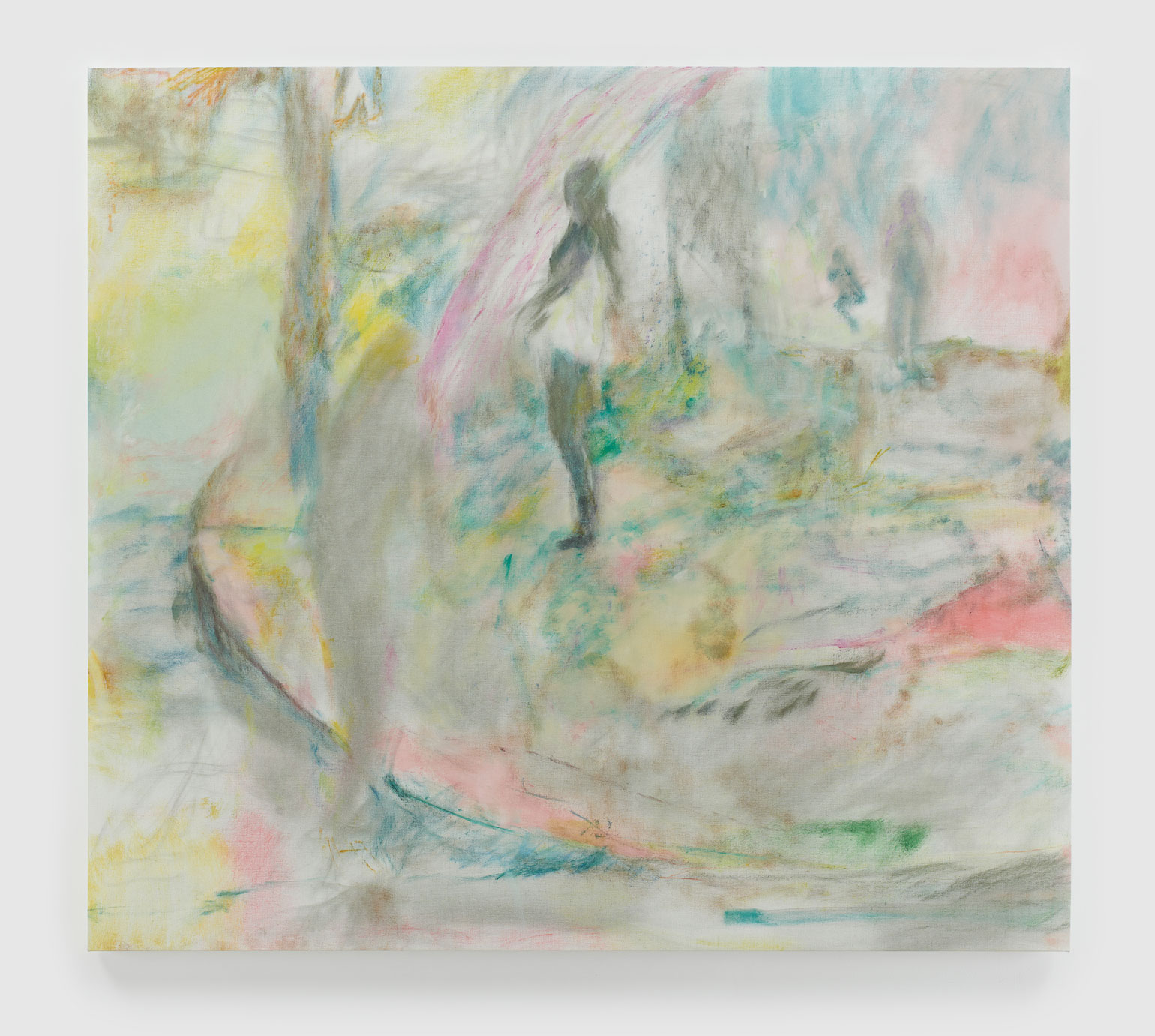
Willa Chasmsweet Wasserman, Untitled (figures), 2021 (detail). Oil on linen, 55 1/2 × 50 in / 141 × 127 cm
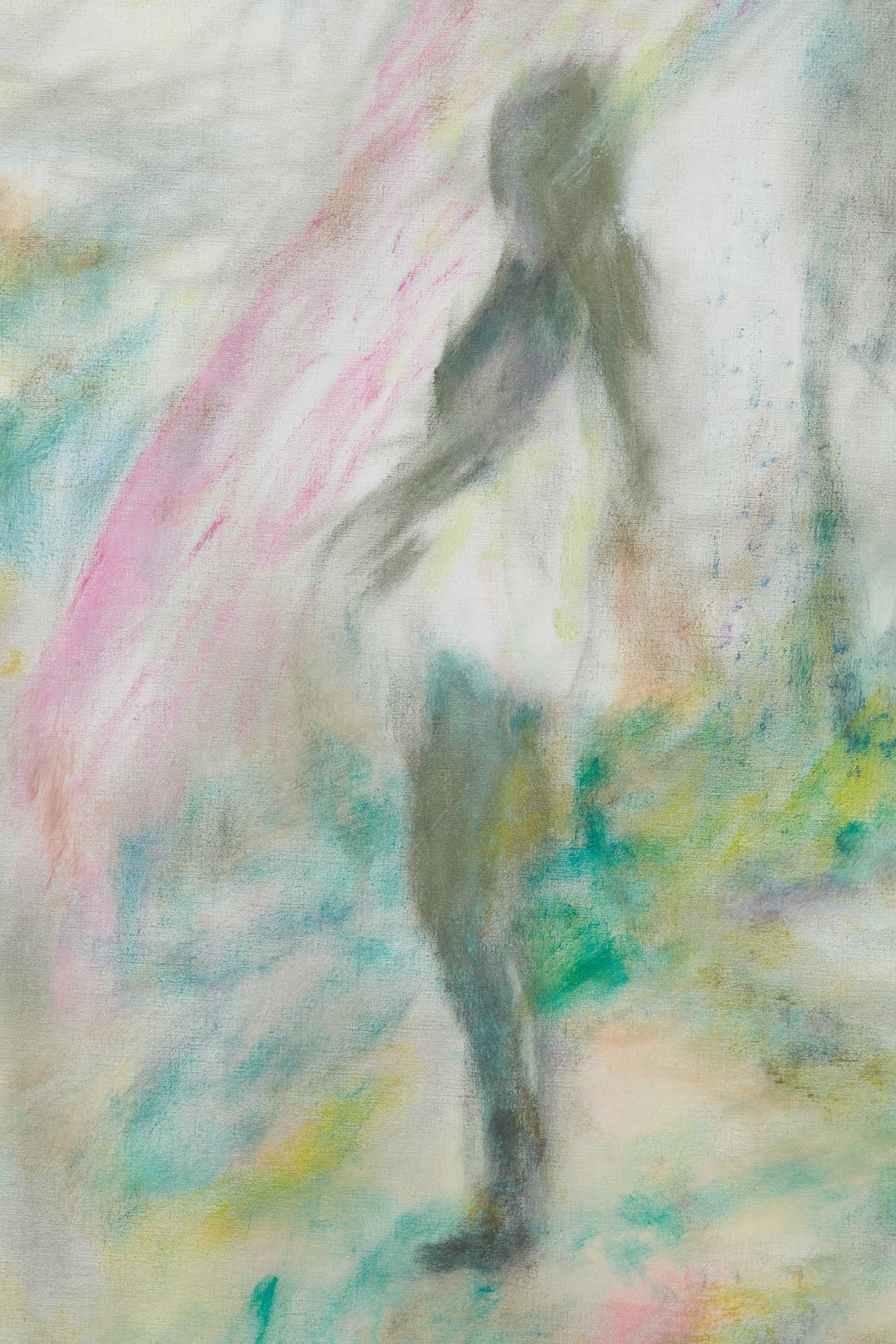
Exhibition view of Willa Chasmsweet Wasserman: chasm sweet, 2021. Downs & Ross, Reade Street, New York.
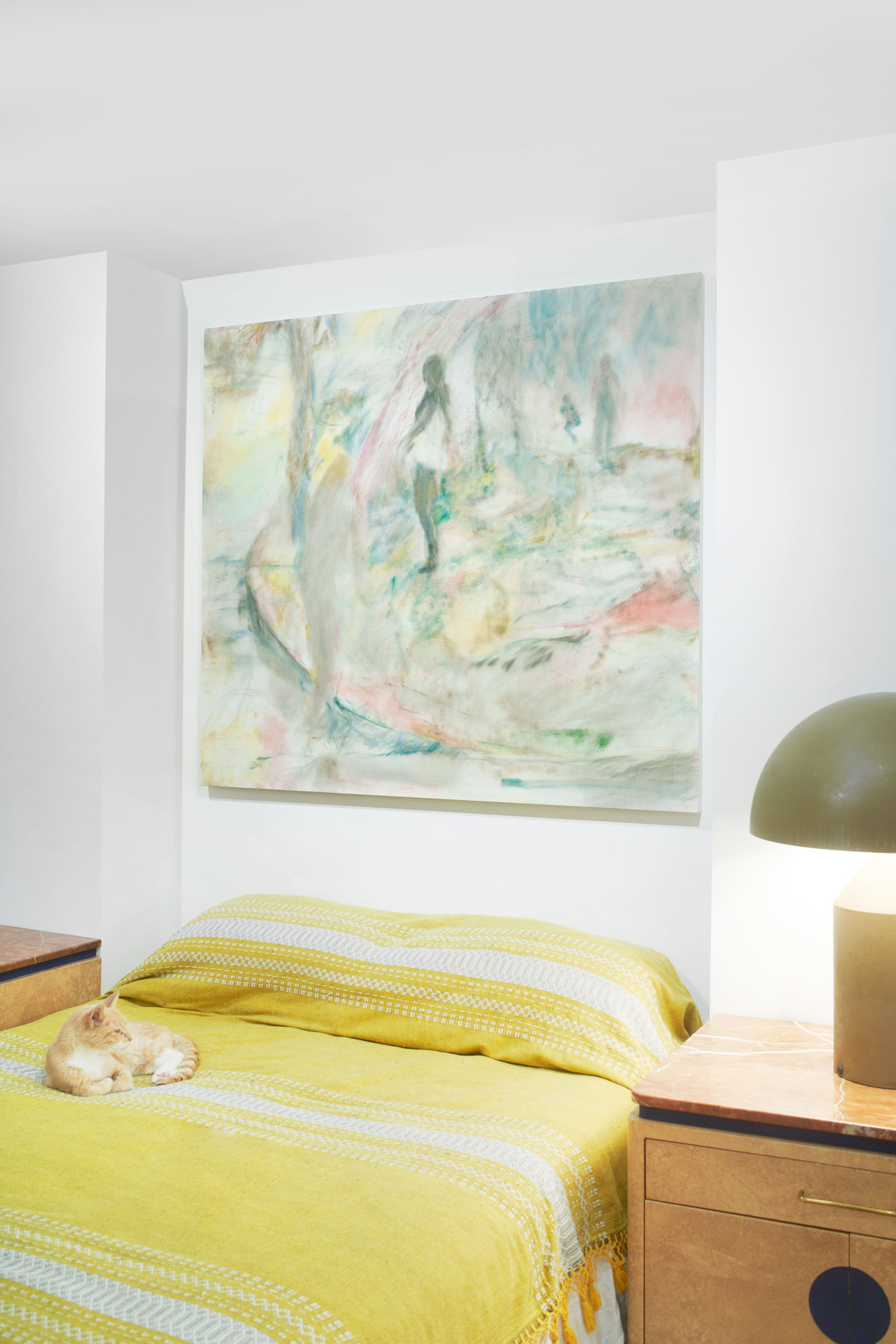
Exhibition view of Willa Chasmsweet Wasserman: chasm sweet, 2021. Downs & Ross, Reade Street, New York.
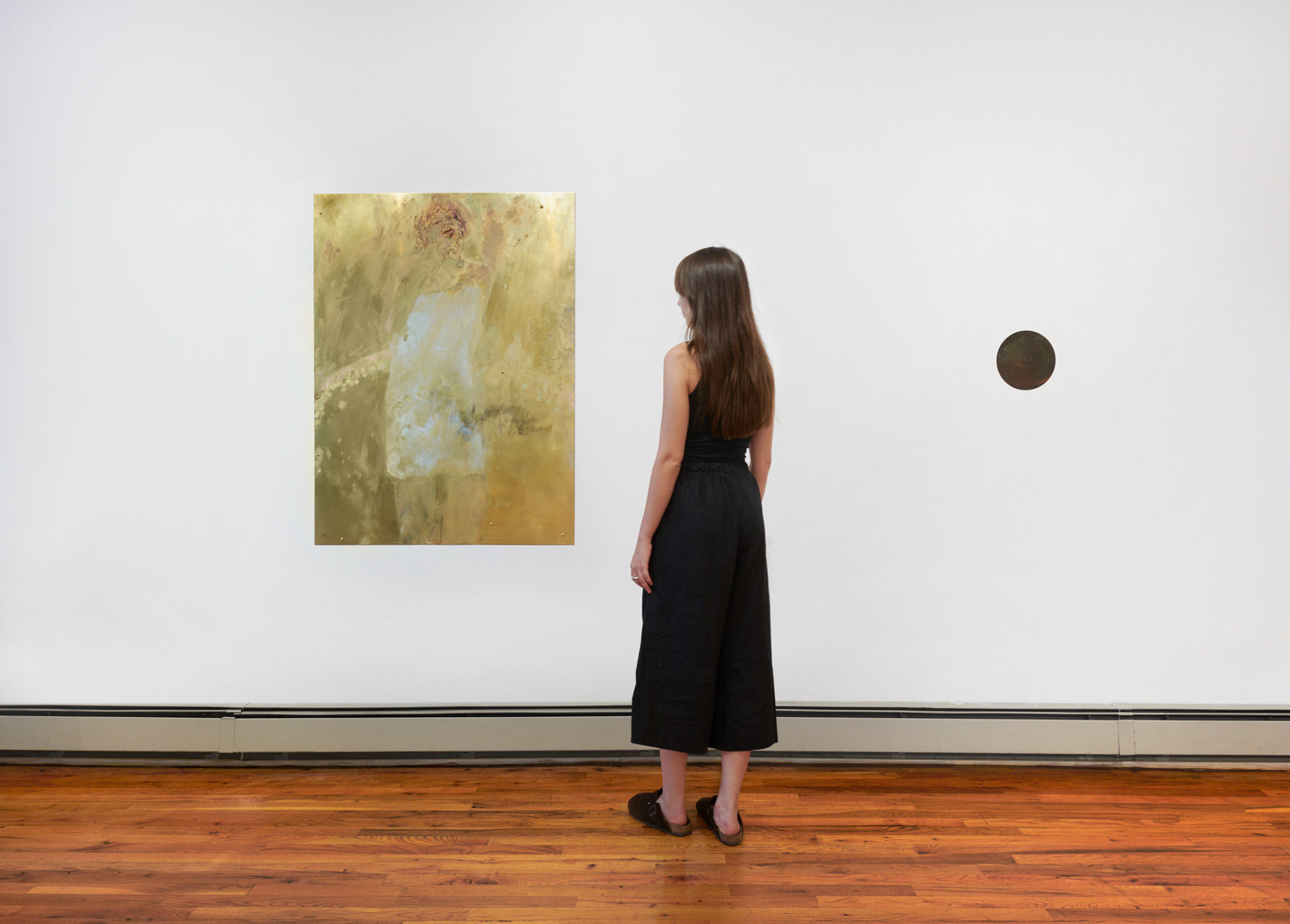
Willa Chasmsweet Wasserman, Dream version 3/19/21 ver. 3, 2021. Oil on brass, 36 × 48 in / 91,4 × 121,9 cm
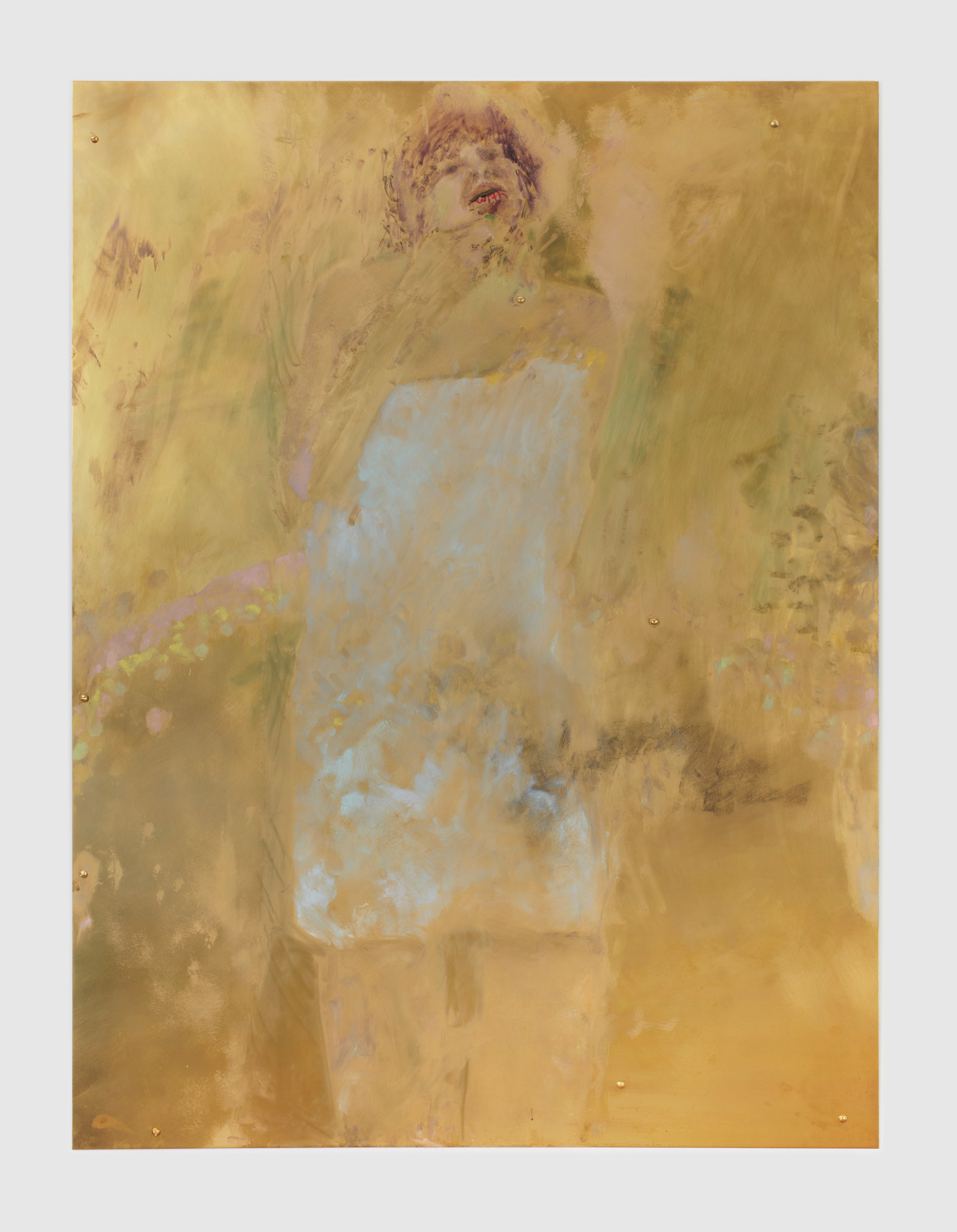
Willa Chasmsweet Wasserman, Dream version 3/19/21 ver. 3, 2021 (detail). Oil on brass, 36 × 48 in / 91,4 × 121,9 cm
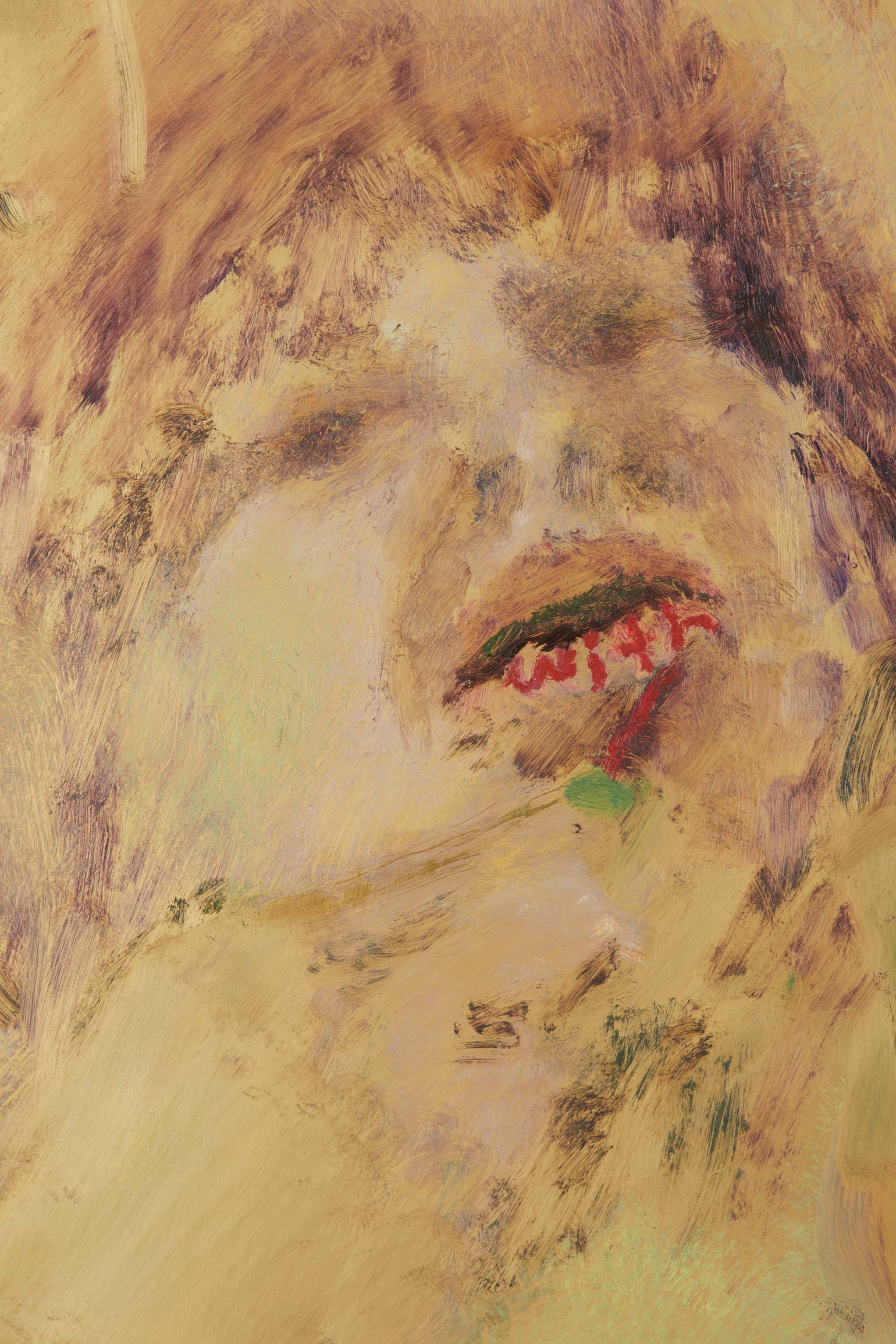
Exhibition view of Willa Chasmsweet Wasserman: chasm sweet, 2021. Downs & Ross, Reade Street, New York.
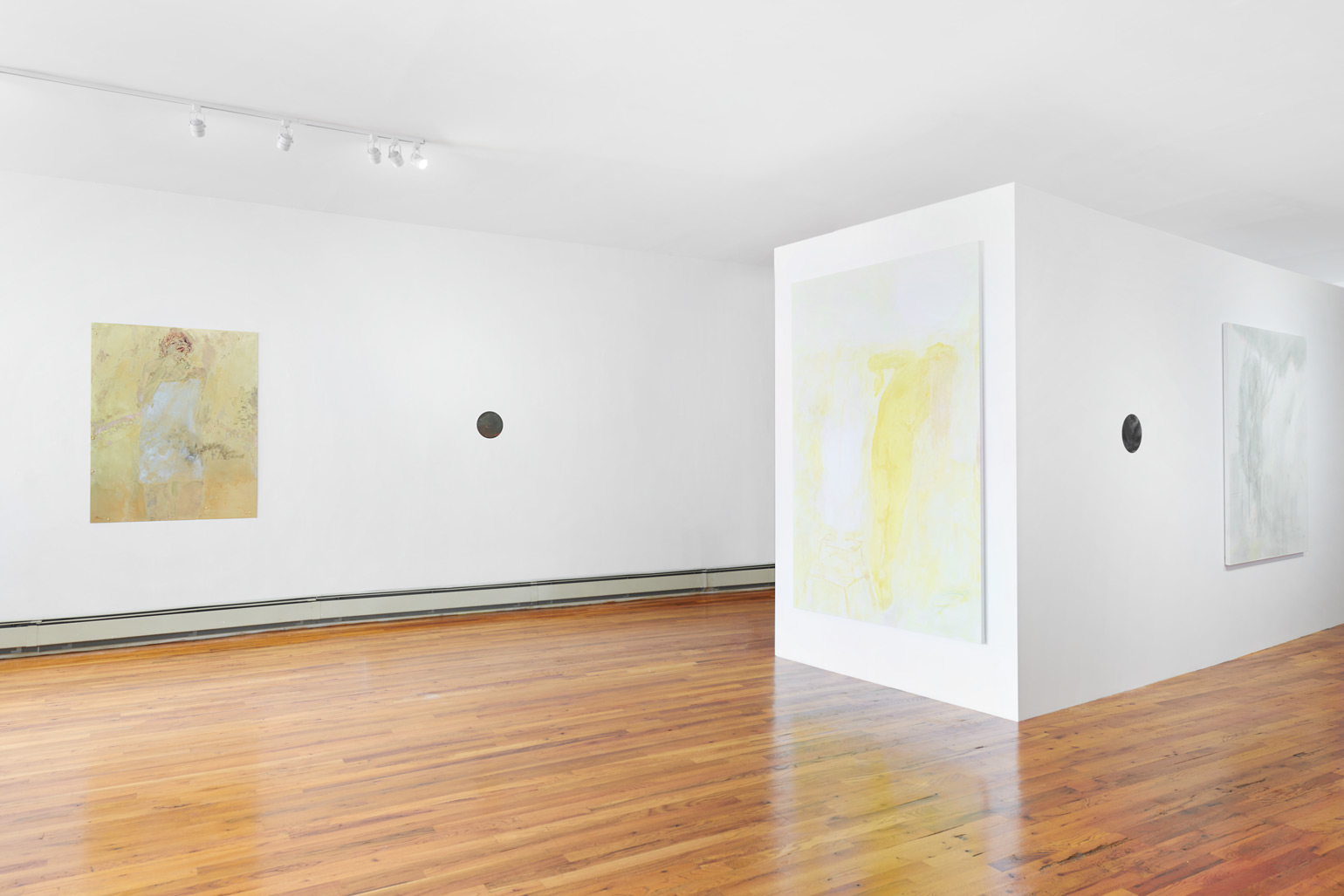
Willa Chasmsweet Wasserman, Sydney, 2021. Oil on blackened steel, 8 × 8 × 1 3/4 in / 20,3 × 20,3 × 4,4 cm
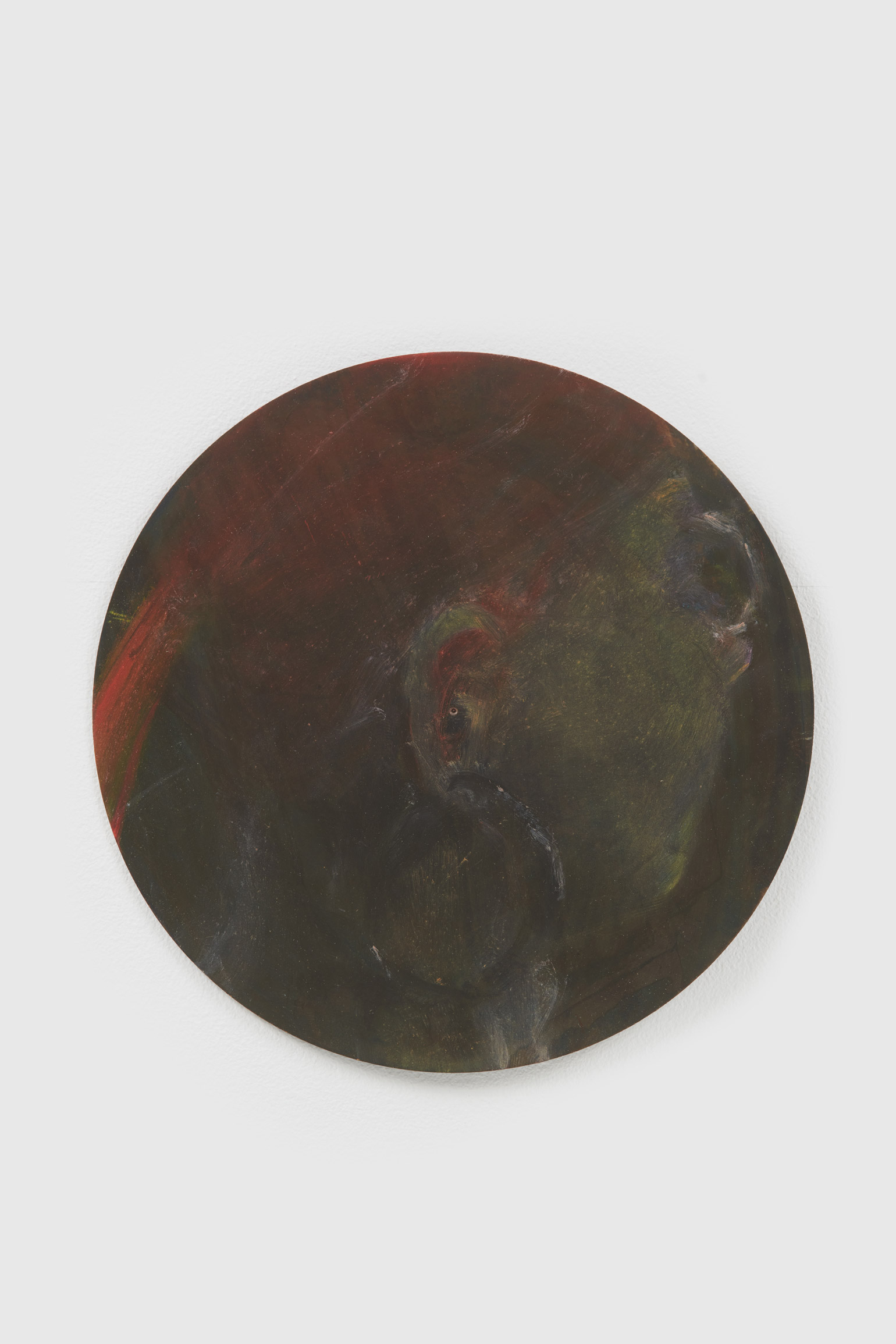
Willa Chasmsweet Wasserman, Sydney, 2021 (detail). Oil on blackened steel, 8 × 8 × 1 3/4 in / 20,3 × 20,3 × 4,4 cm
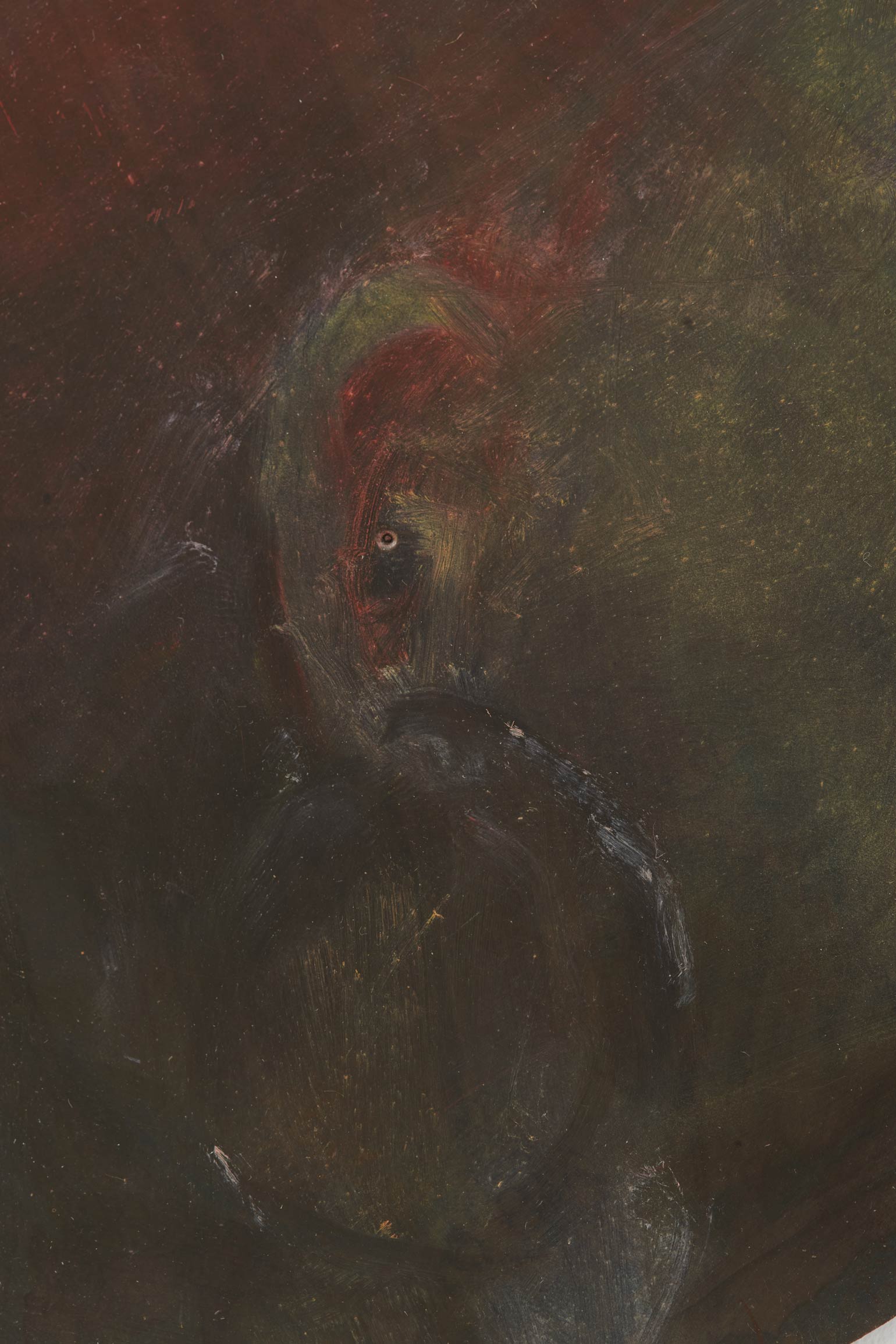
Willa Chasmsweet Wasserman, 858 by Emily Dickinson in which I read "chasmsweet" while I couldn't sleep on 3/15/2021, 2021. Oil on linen, 49 1/2 × 74 1/4 in / 125,7 × 188,6 cm
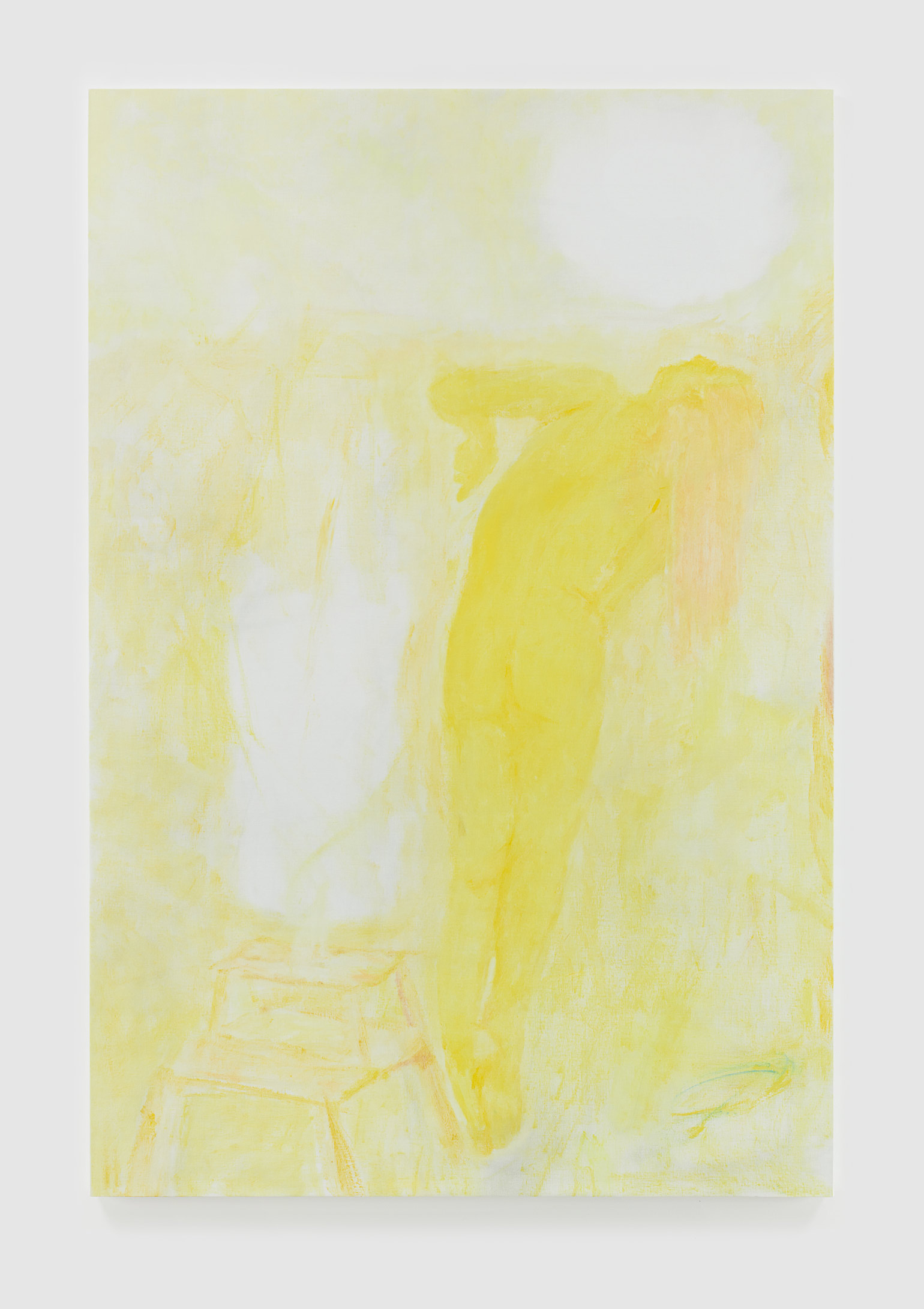
Willa Chasmsweet Wasserman, 858 by Emily Dickinson in which I read "chasmsweet" while I couldn't sleep on 3/15/2021, 2021 (detail). Oil on linen, 49 1/2 × 74 1/4 in / 125,7 × 188,6 cm
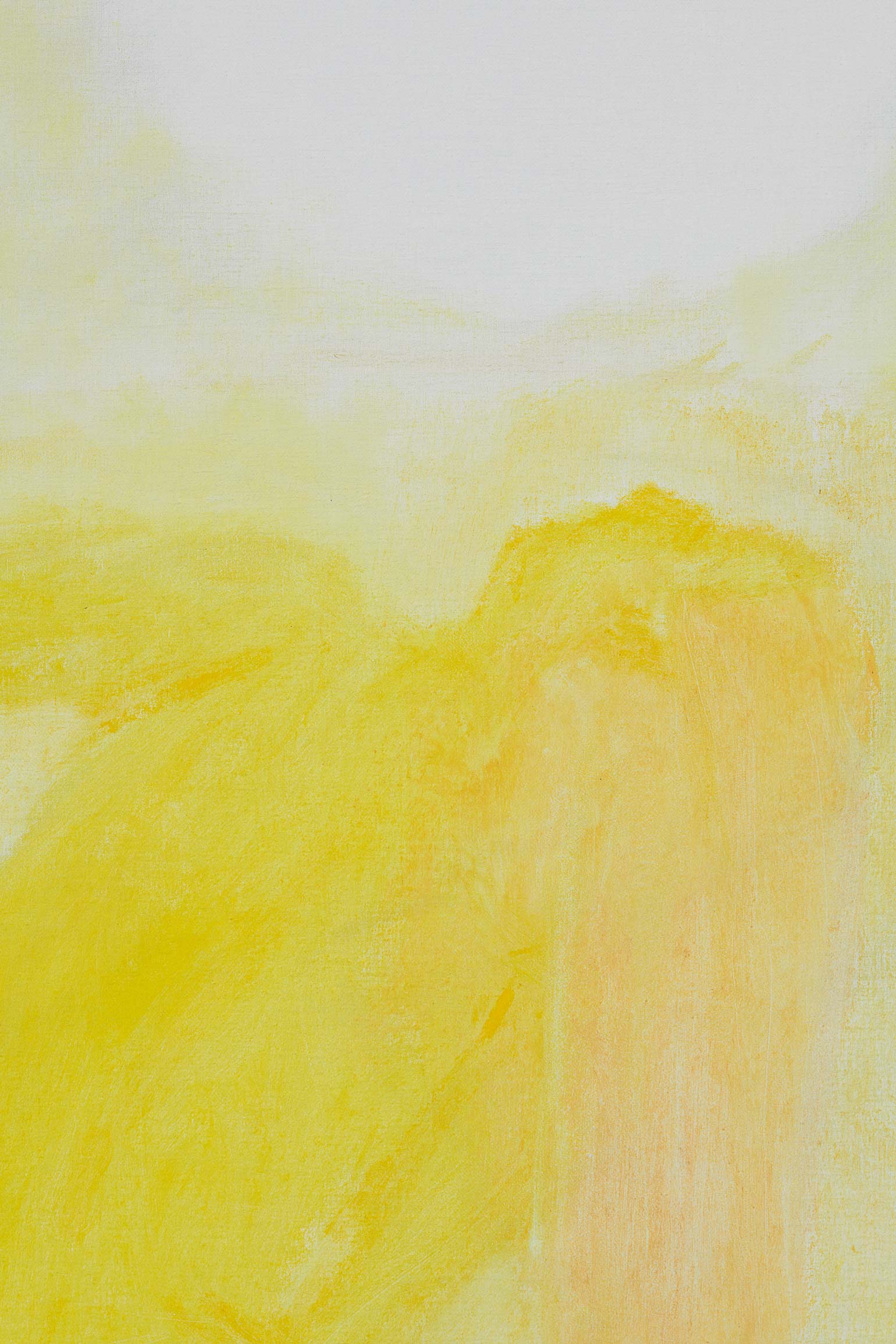
Exhibition view of Willa Chasmsweet Wasserman: chasm sweet, 2021. Downs & Ross, Reade Street, New York.
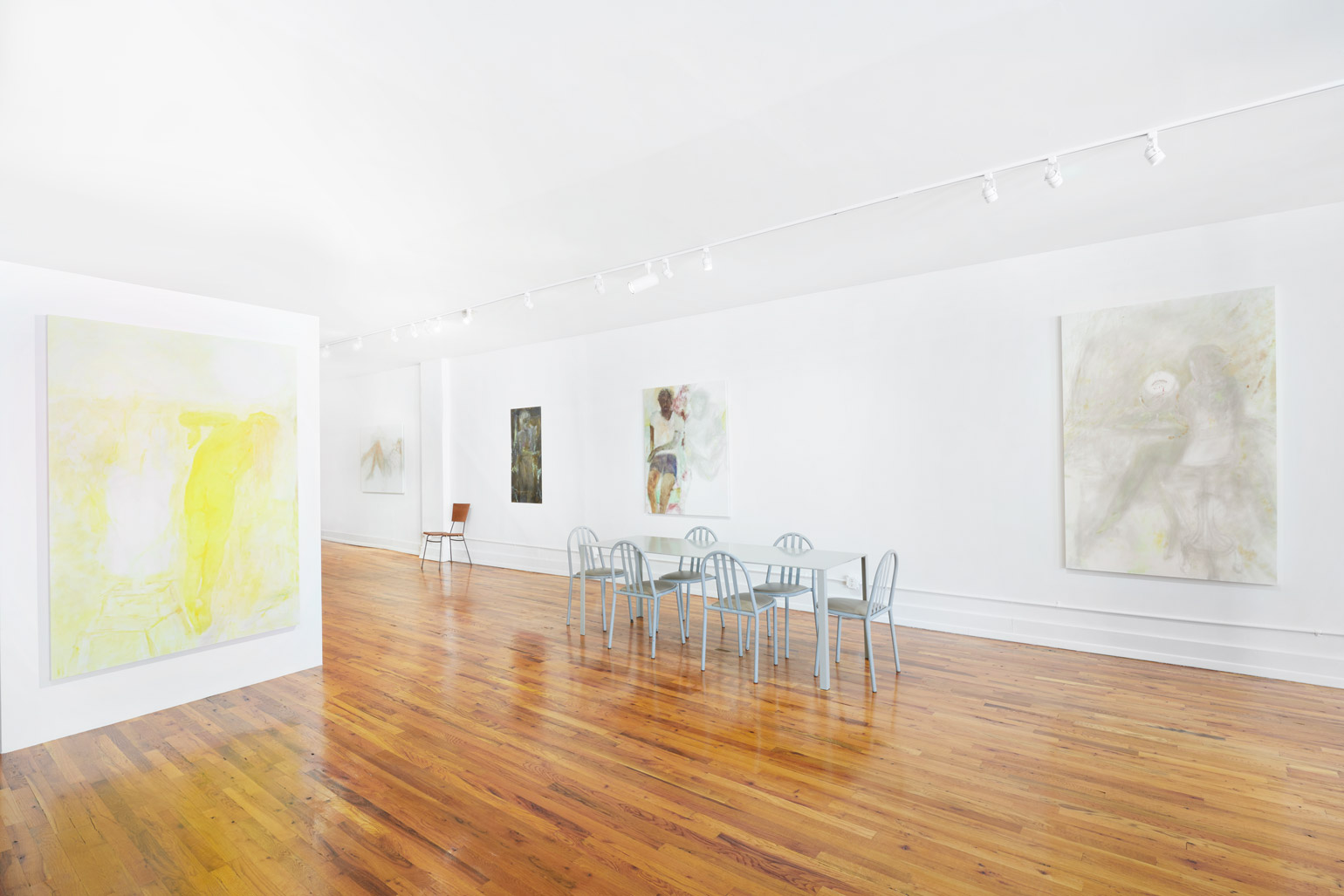
Willa Chasmsweet Wasserman, Dream, 3/19/21, ver. 2, 2021. Oil on brass, 47 1/2 × 71 in / 120,7 × 180,3 cm
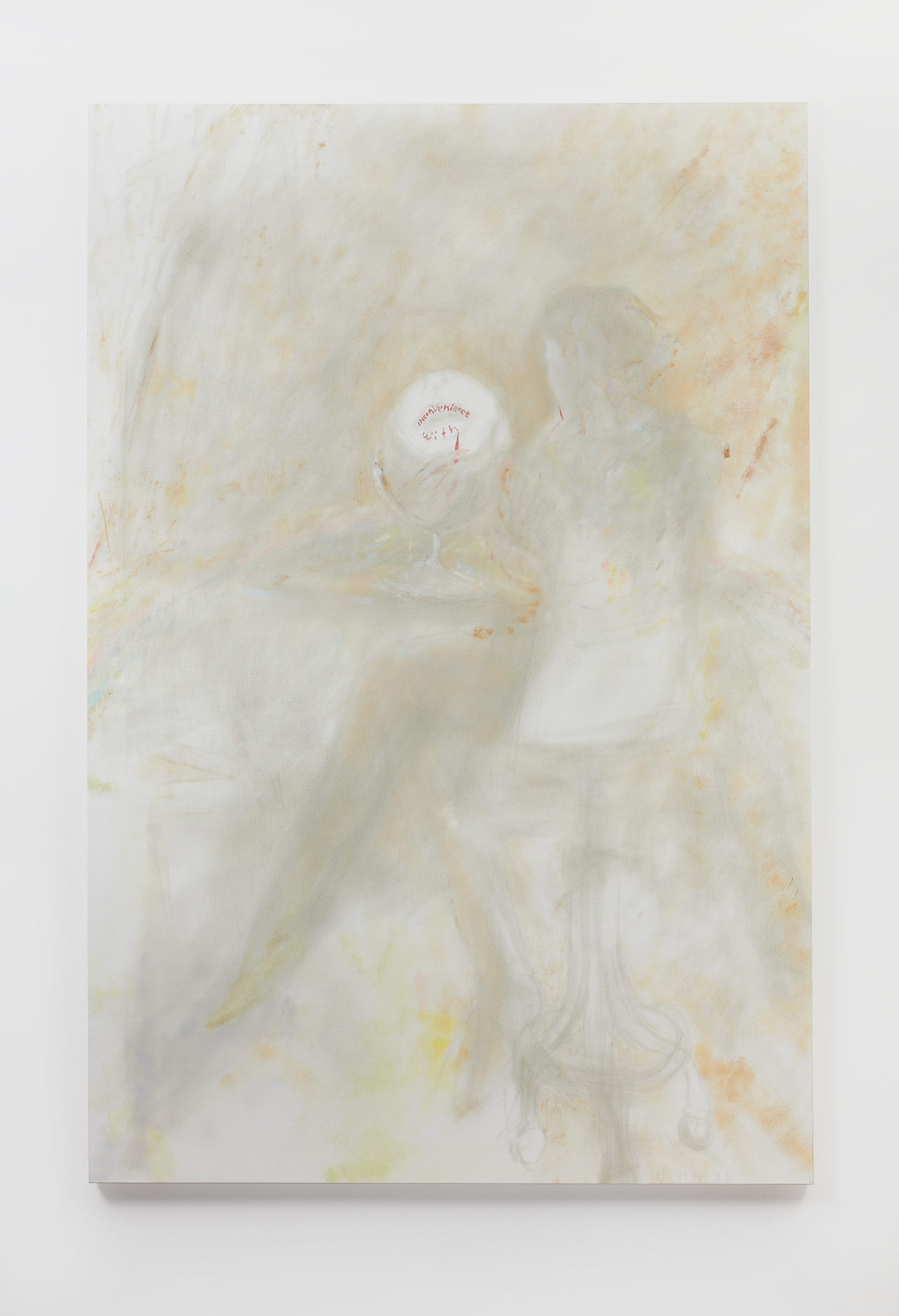
Willa Chasmsweet Wasserman, Dream, 3/19/21, ver. 2, 2021 (detail). Oil on brass, 47 1/2 × 71 in / 120,7 × 180,3 cm
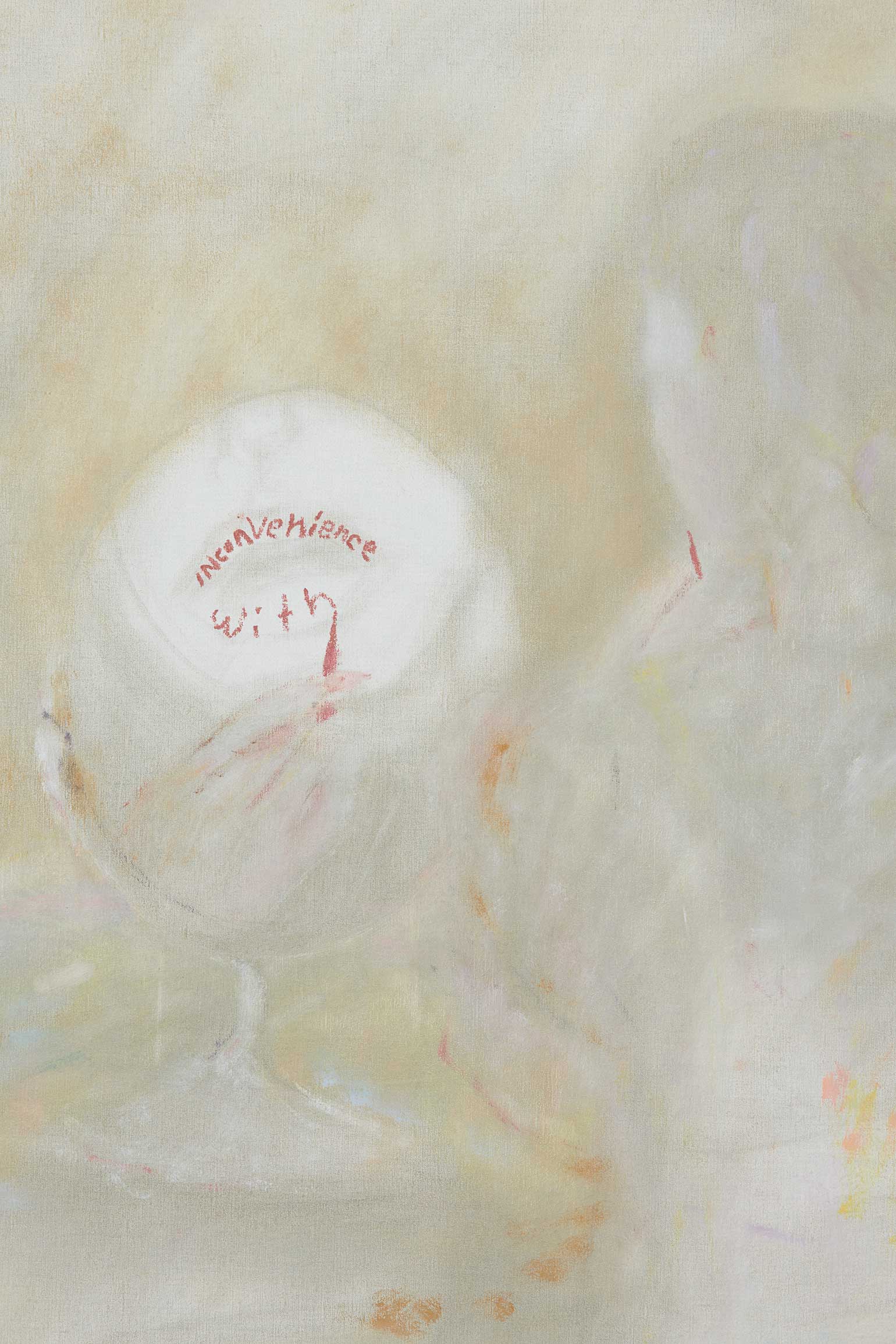
Exhibition view of Willa Chasmsweet Wasserman: chasm sweet, 2021. Downs & Ross, Reade Street, New York.
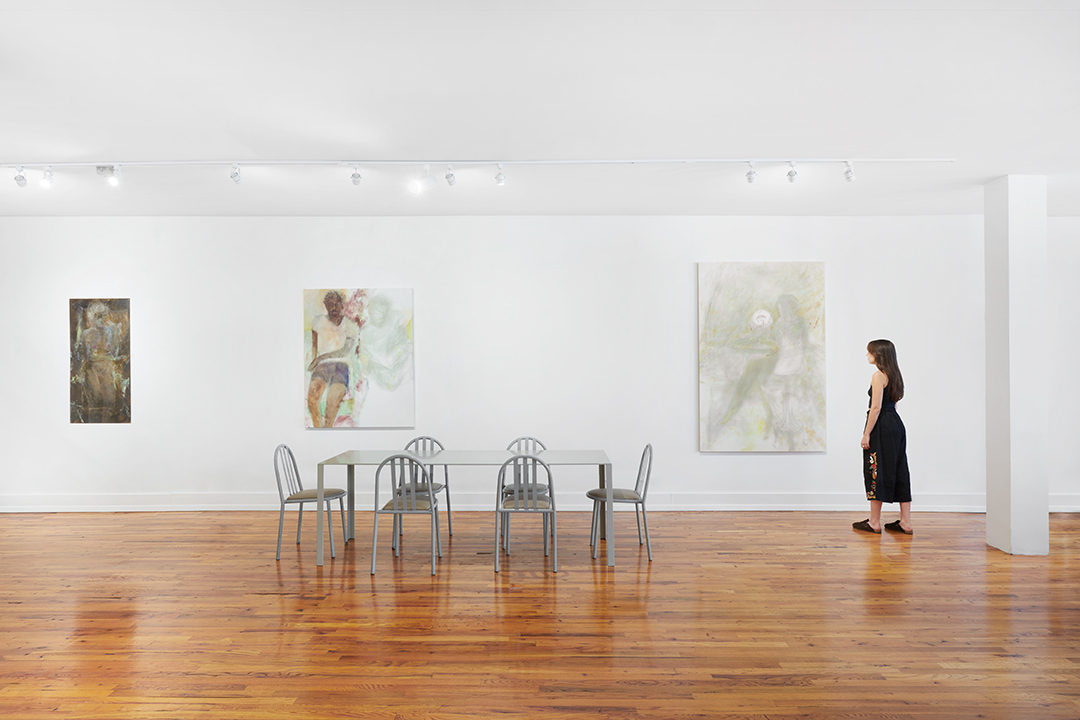
Willa Chasmsweet Wasserman, Paul 6/14/2021, 2021. Oil on linen, 42 × 52 1/2 in / 106,7 × 133,3 cm
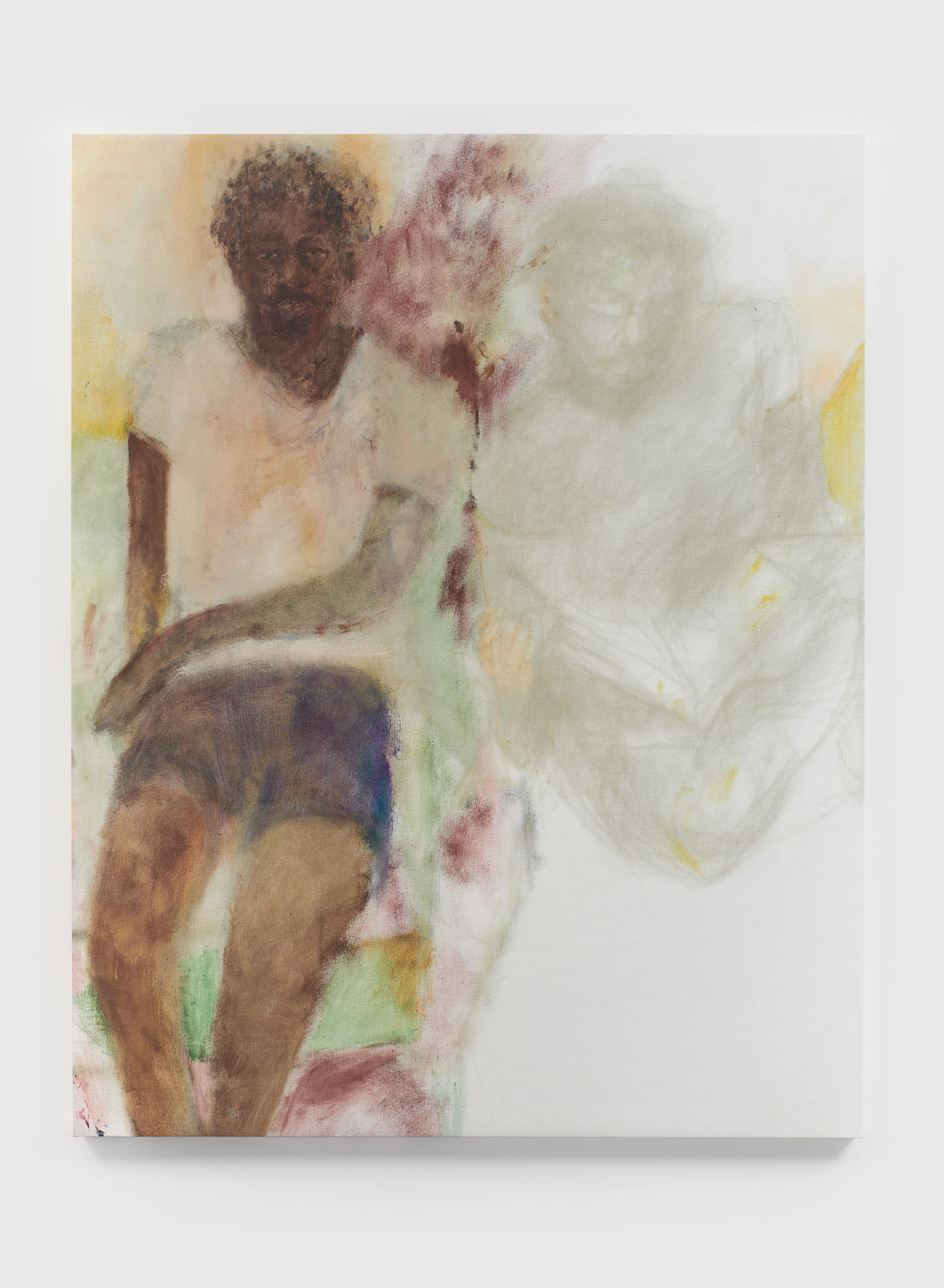
Willa Chasmsweet Wasserman, Paul 6/14/2021, 2021 (detail). Oil on linen, 42 × 52 1/2 in / 106,7 × 133,3 cm
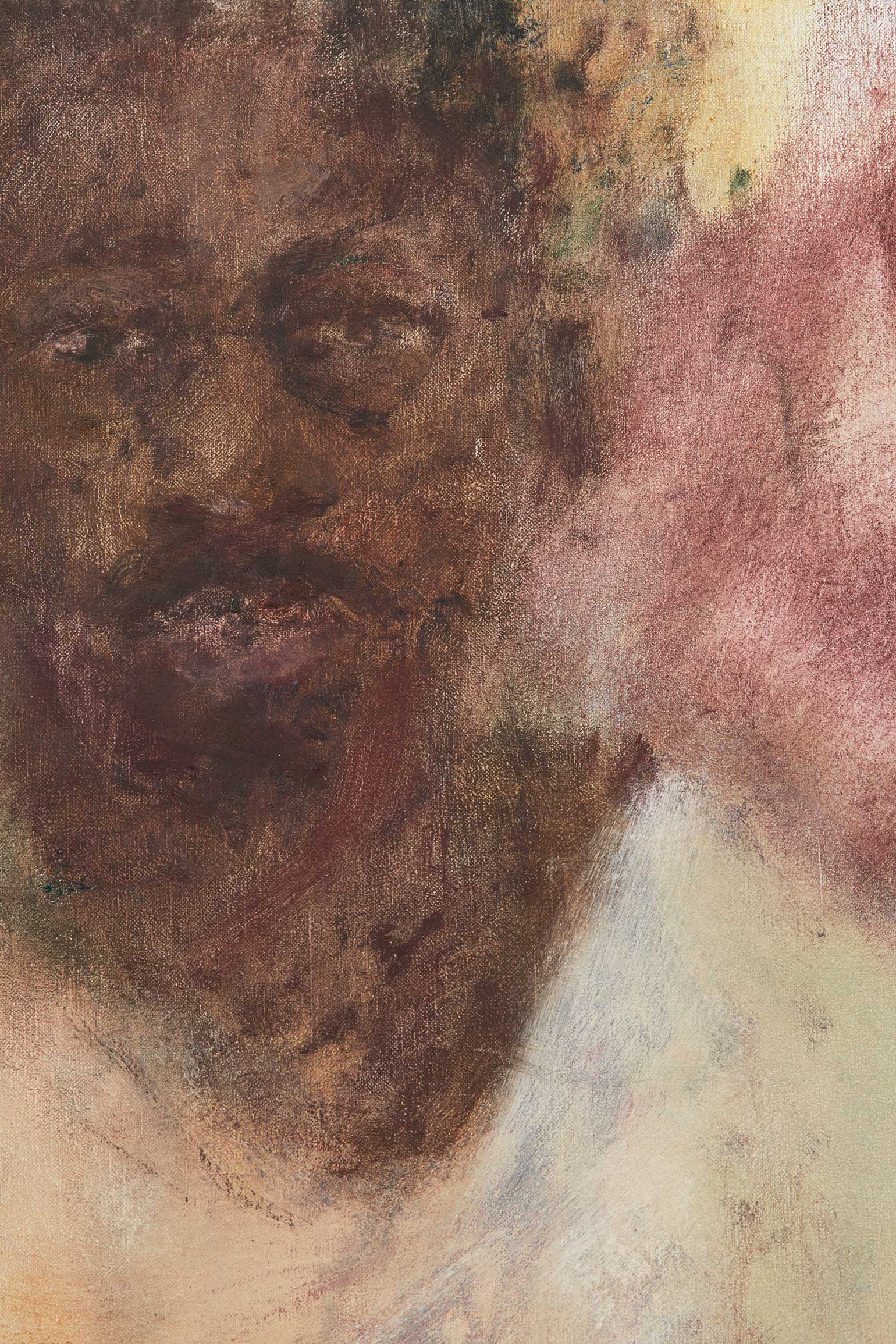
Exhibition view of Willa Chasmsweet Wasserman: chasm sweet, 2021. Downs & Ross, Reade Street, New York.
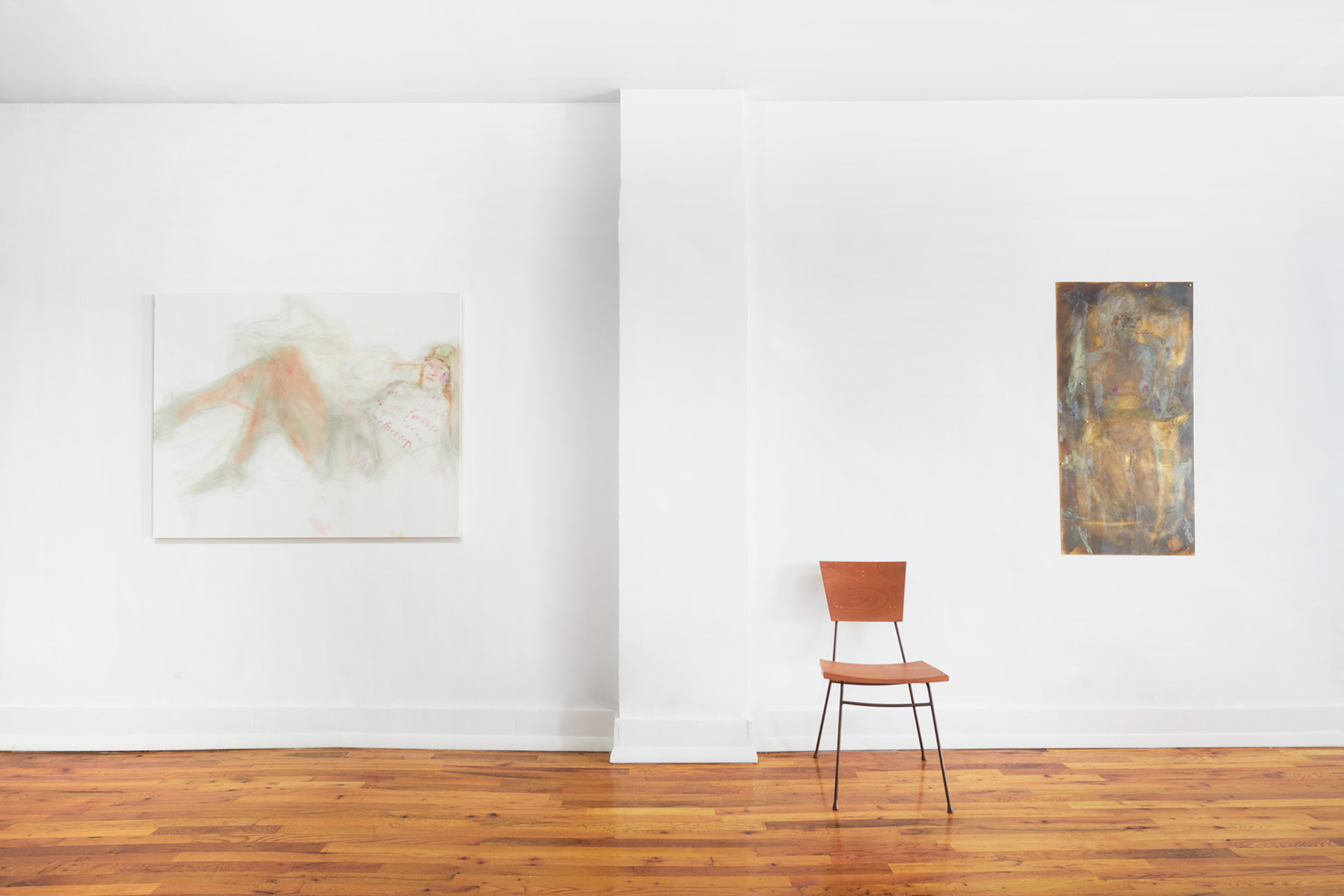
Andrew Pfieffer McNay, The Siggi Dining Chair, 2021. Cherrywood, steel, bronze, 18 × 19 × 32 in / 45,7 × 48,3 × 81.3 cm
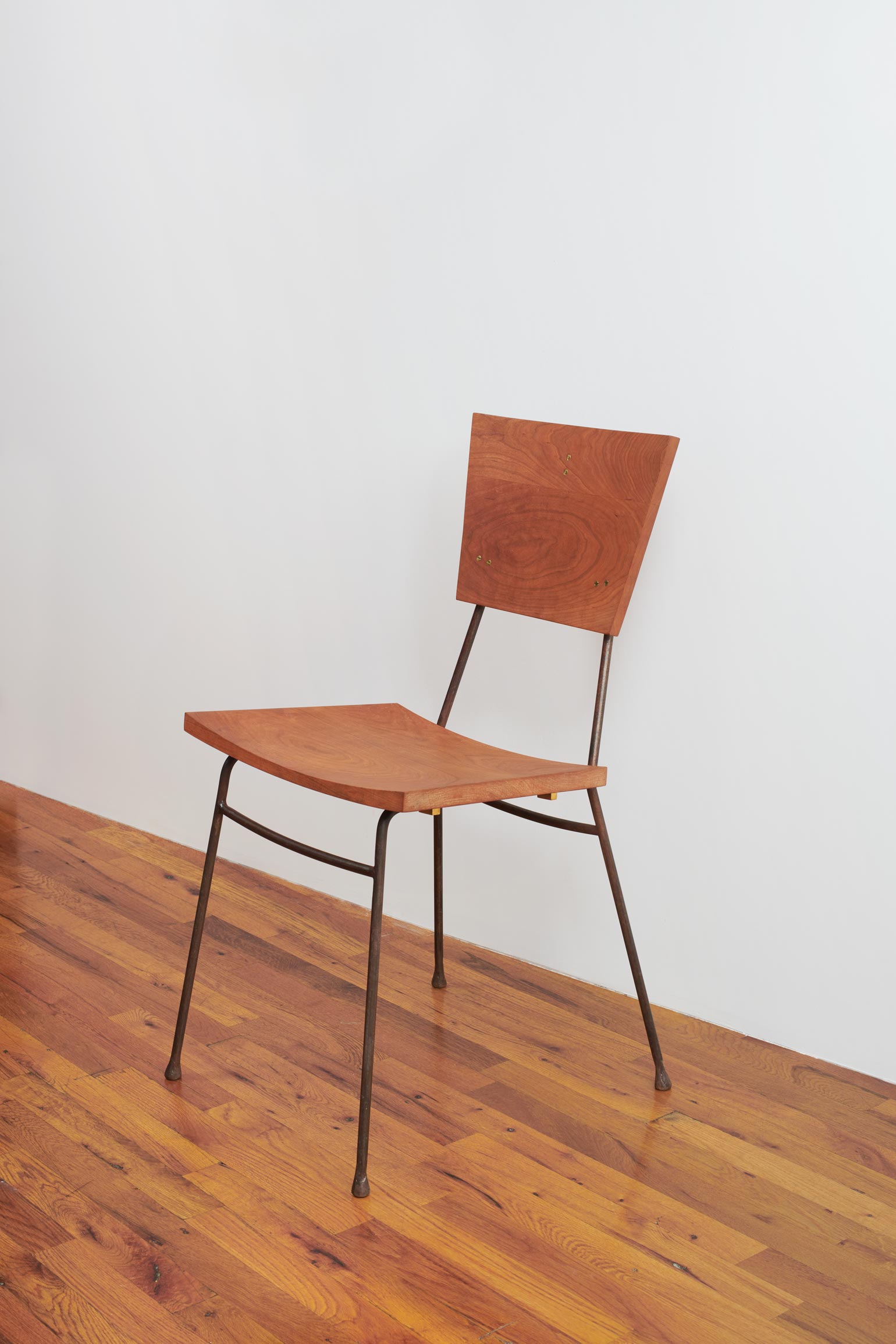
Willa Chasmsweet Wasserman, Dream 3/19/21 ver. 4, 2021. Oil on brass, 24 × 48 / 61 × 121,9 cm
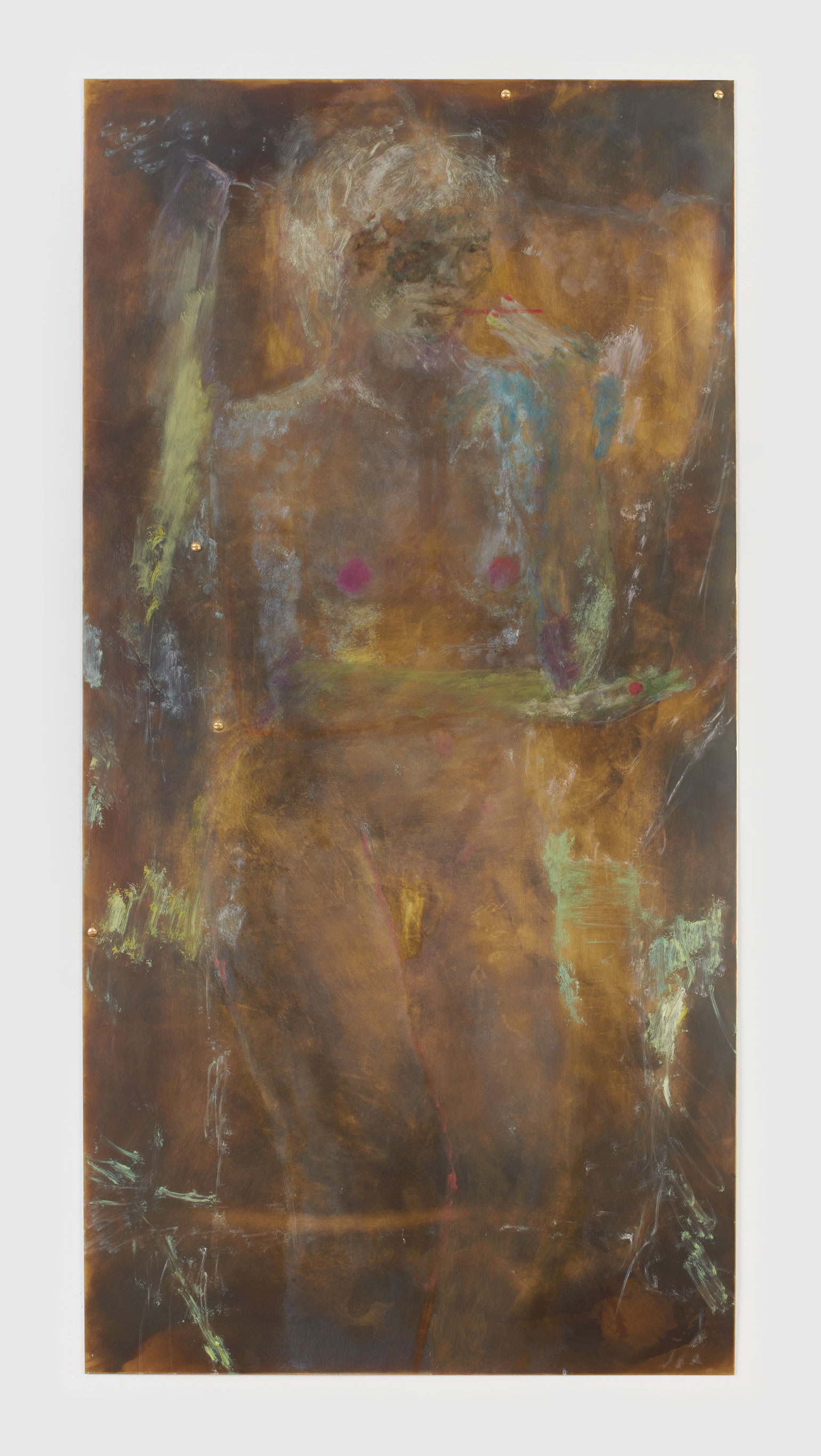
Willa Chasmsweet Wasserman, Dream 3/19/21 ver. 4, 2021 (detail). Oil on brass, 24 × 48 / 61 × 121,9 cm
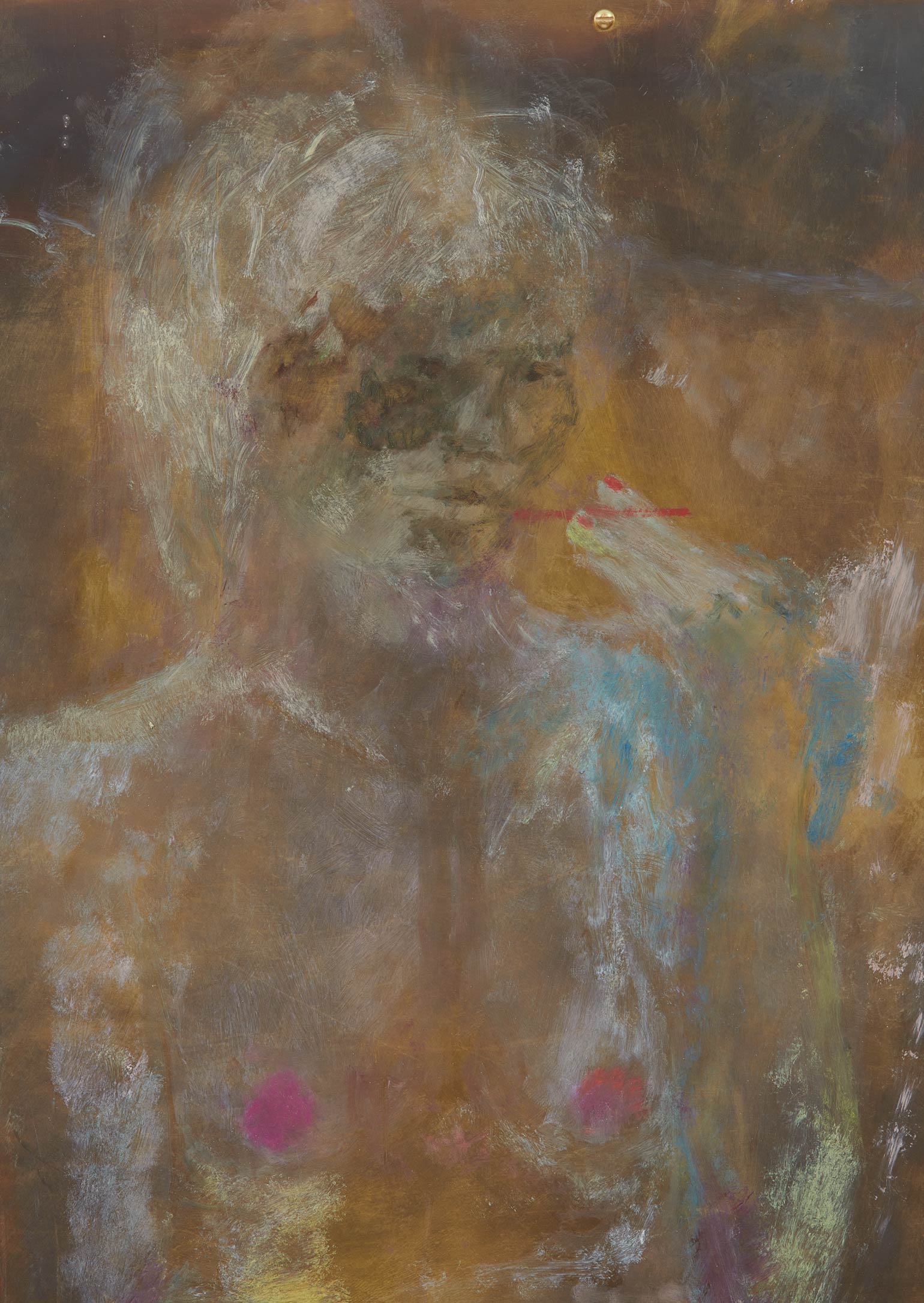
Willa Chasmsweet Wasserman, Bea 6/7 & 6/23/21, 2021. Oil on linen, 43 × 53 in / 109,2 × 134,6 cm
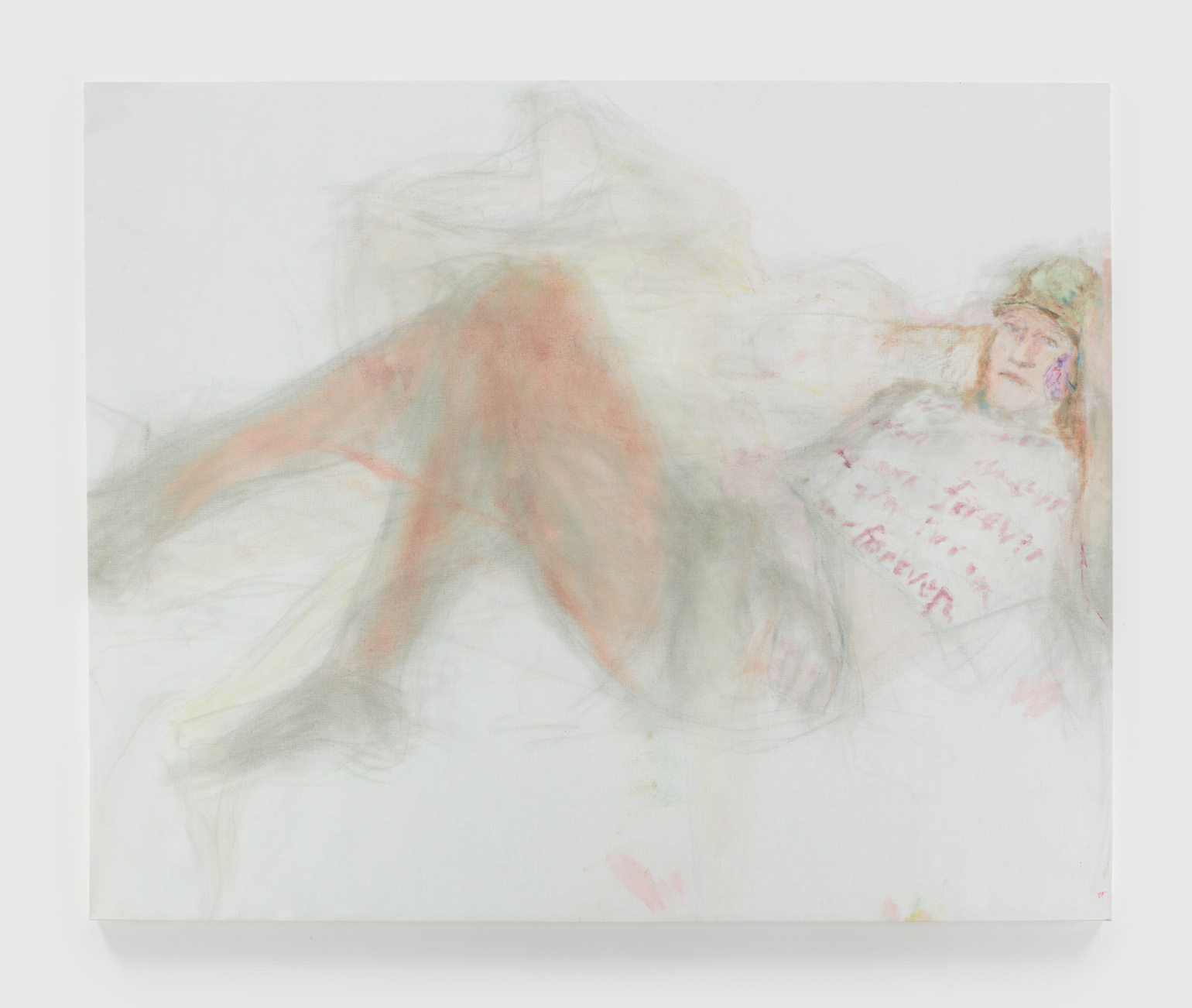
Willa Chasmsweet Wasserman, Bea 6/7 & 6/23/21, 2021 (detail). Oil on linen, 43 × 53 in / 109,2 × 134,6 cm
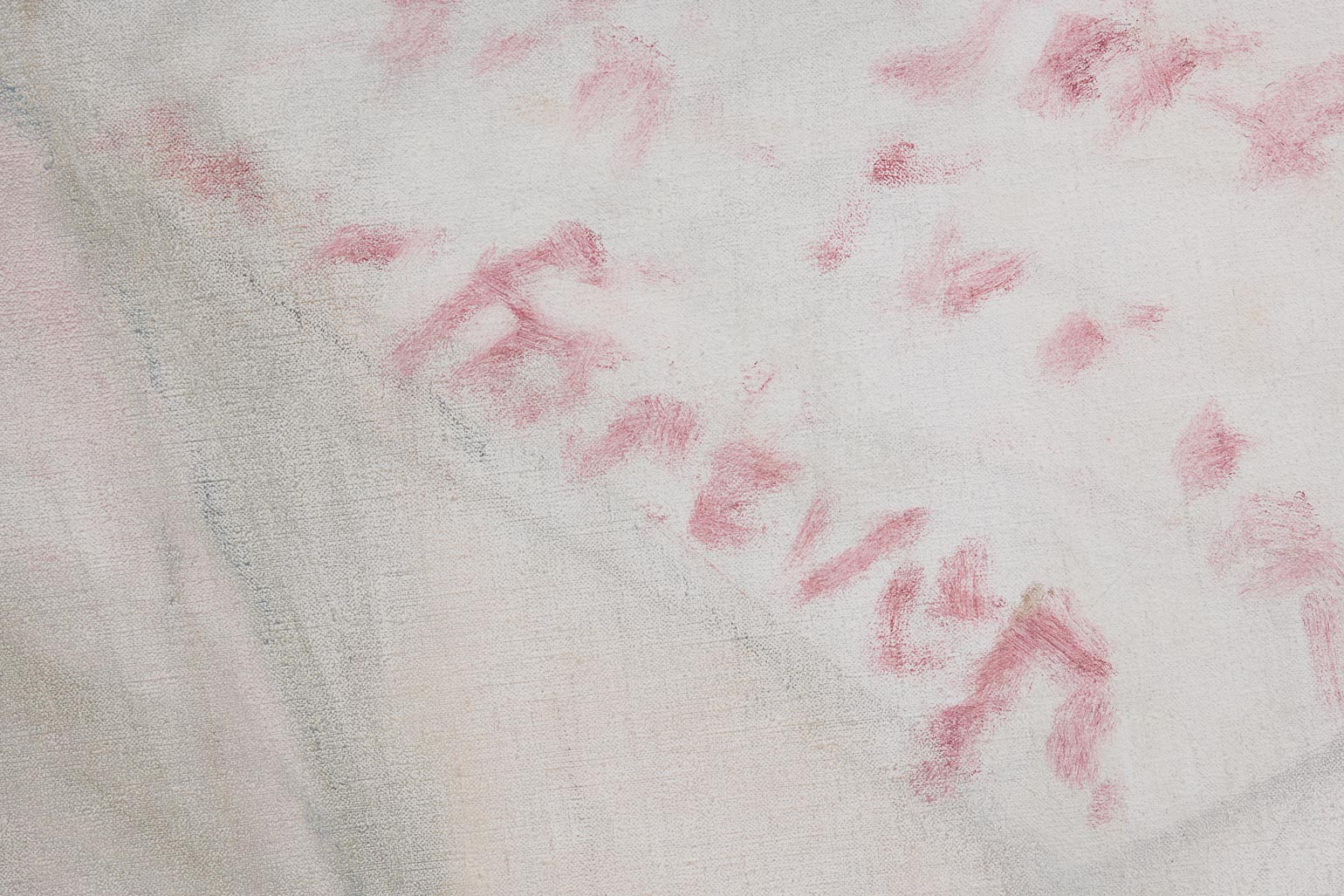
Exhibition view of Willa Chasmsweet Wasserman: chasm sweet, 2021. Downs & Ross, Reade Street, New York.
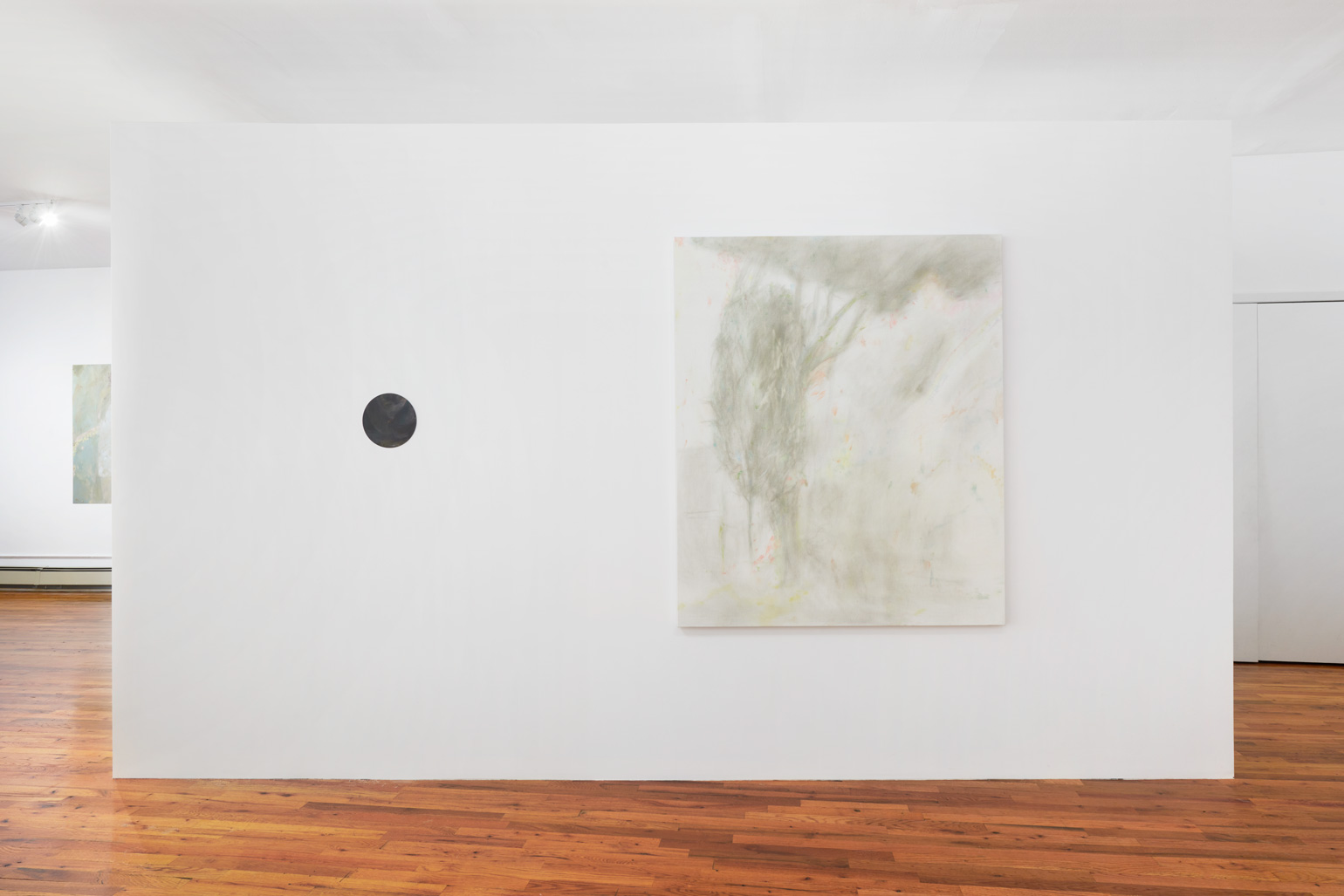
Willa Chasmsweet Wasserman, A Renaissance copy and rainbow dream on 4/7/2021, 2021. Oil on linen, 47 3/8 × 56 3/8 in / 120,3 × 143,2 cm
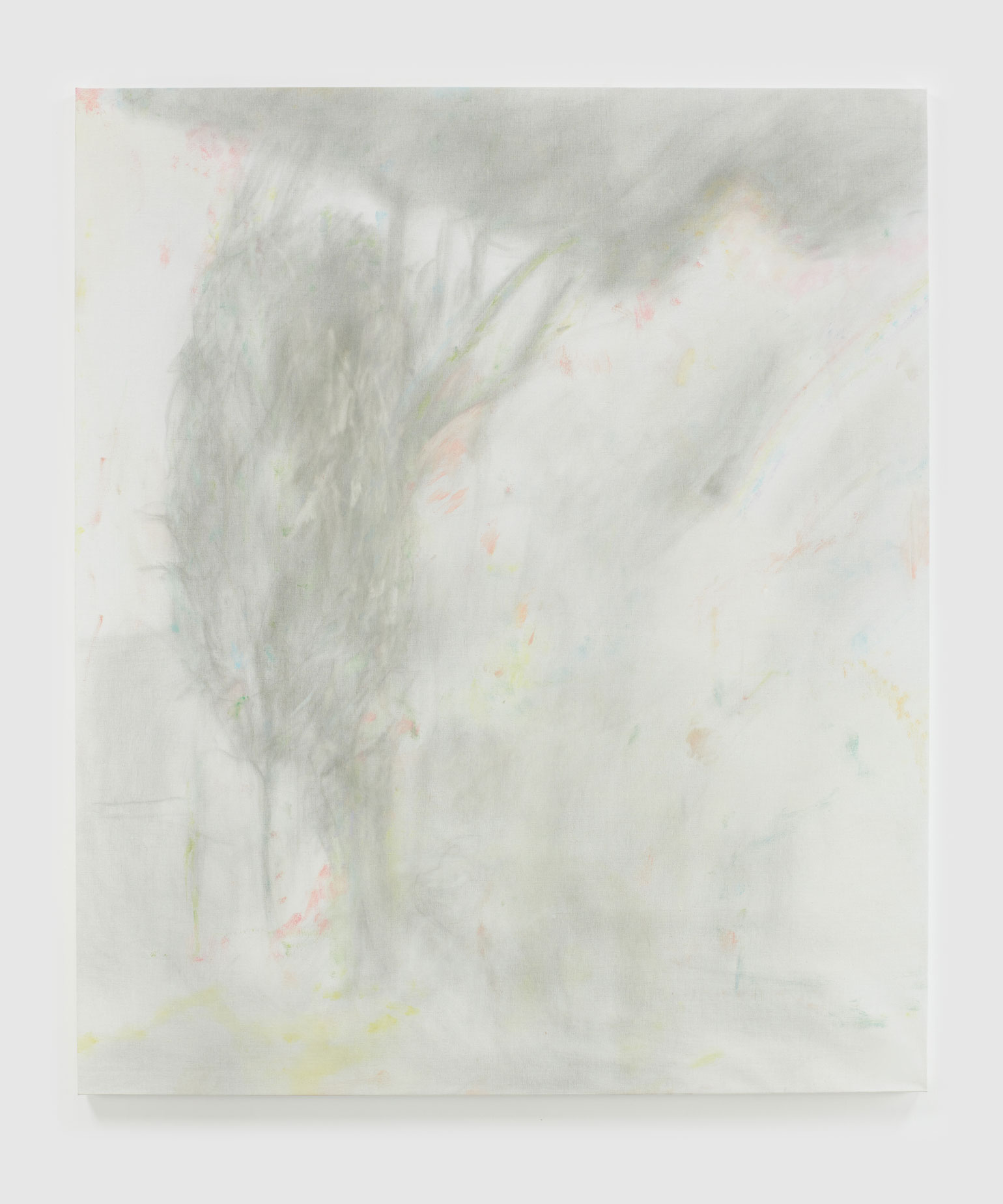
Willa Chasmsweet Wasserman, untitled 7/11/21, 2021. Oil on blackened steel, 8 × 8 × 1 3/4 in / 20,3 × 20,3 × 4,4 cm
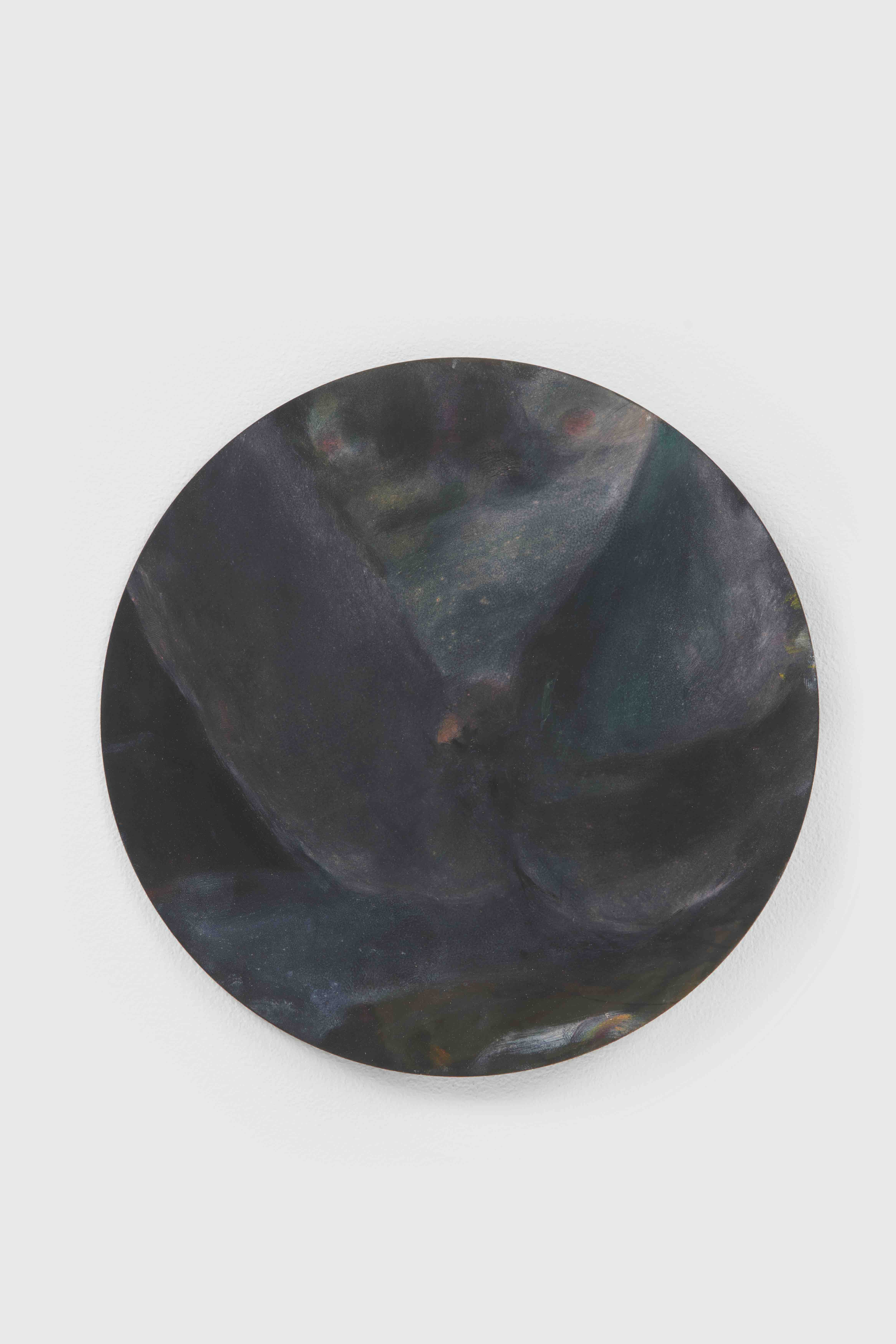
Willa Chasmsweet Wasserman, untitled 7/11/21, 2021 (detail). Oil on blackened steel, 8 × 8 × 1 3/4 in / 20,3 × 20,3 × 4,4 cm
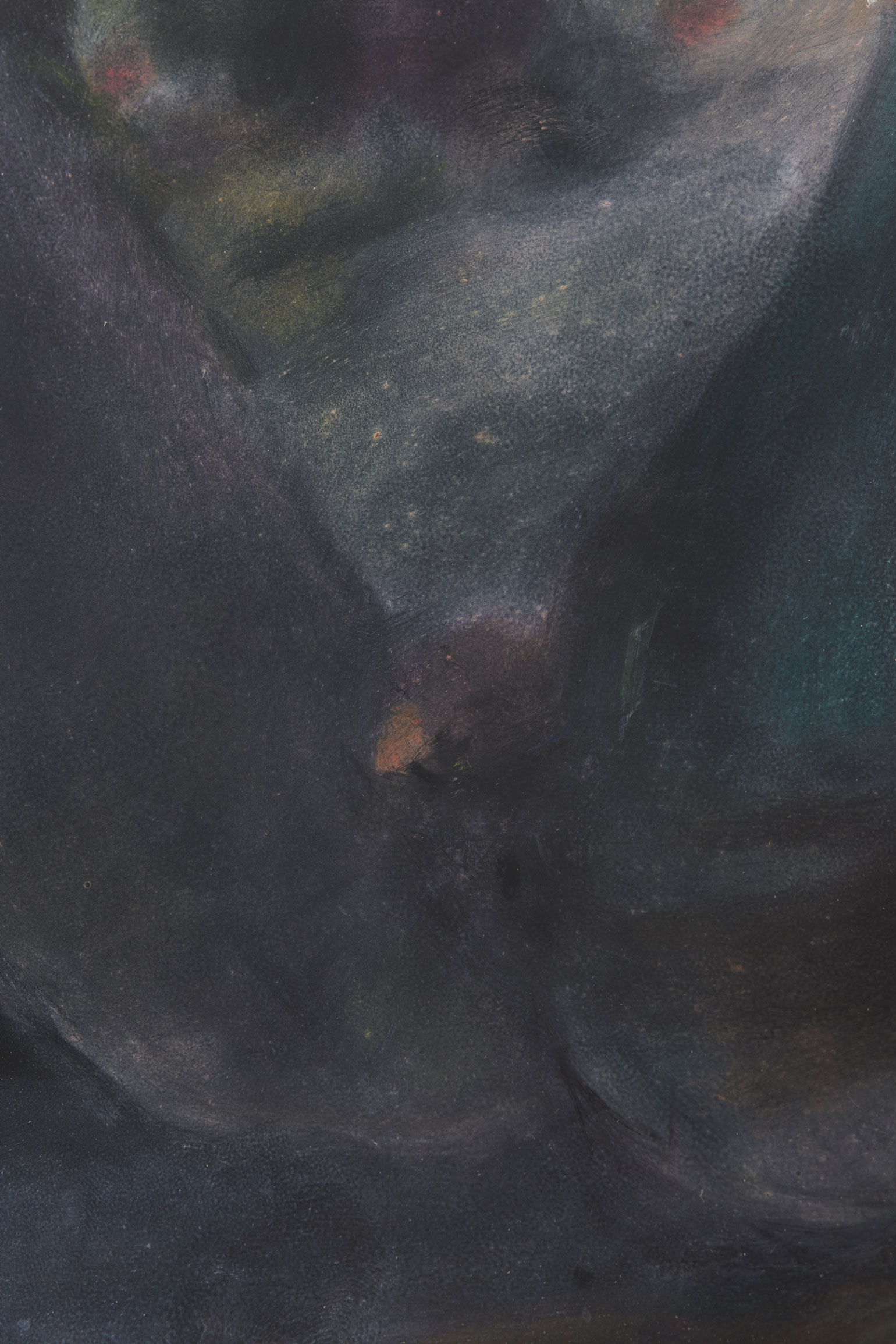
– Jeremy Gloster
Willa Chasmsweet Wasserman (b. 1990, Evansville, IN; lives and works in New York) studied at Academie Minerva, Groningen, Netherlands in 2011, gained her BFA at Macaulay Honors College at Hunter College in 2013, and received her MFA at the University of California, Los Angeles, in 2019. Solo exhibitions: Downs & Ross, New York; Good Weather, Chicago; in lieu, Los Angeles; The Gallery at Michaels, Santa Monica; UCLA New Wight Gallery, Los Angeles; and Nothing Special, Los Angeles. Selected group presentations include: Frieze, with Downs & Ross, New York; Adams and Ollman, Portland, OR; Sargent's Daughters, New York, Downs & Ross, New York; Park View / Paul Soto, Los Angeles.
Downs & Ross' Reade Street apartment is open for scheduled visits Saturdays, 12-6pm, and by private
appointment throughout the week. Please contact the gallery at office@downsross.com, or by phone
at +1 646 741-9138, to request a time slot and complete location details.